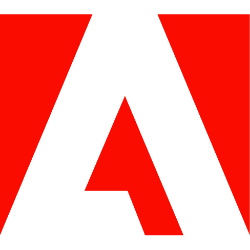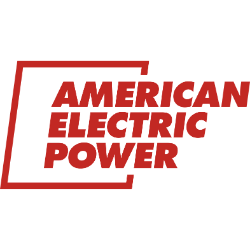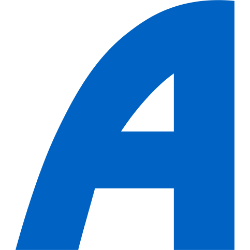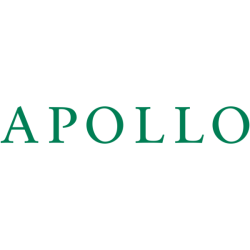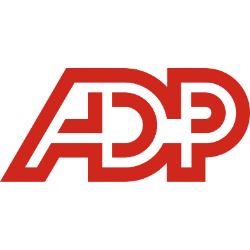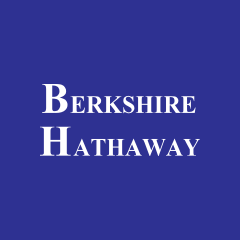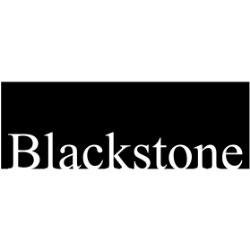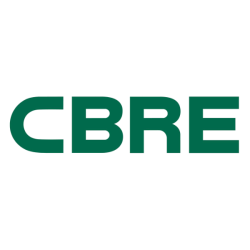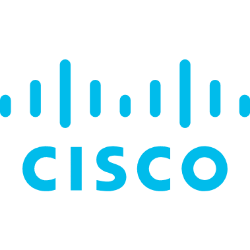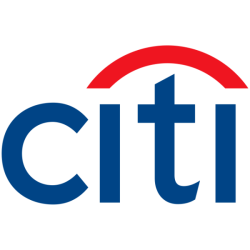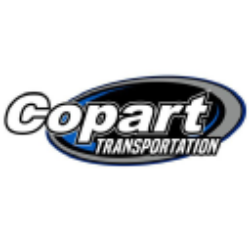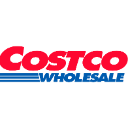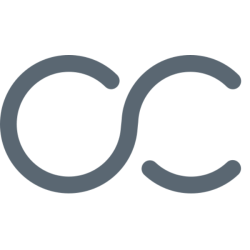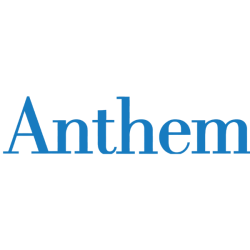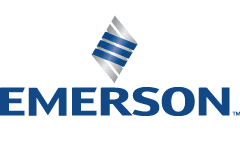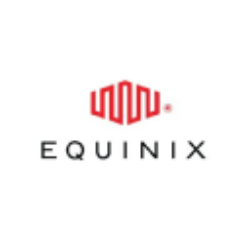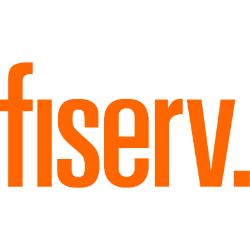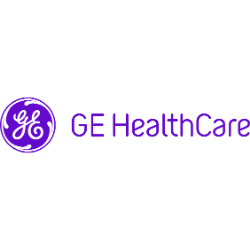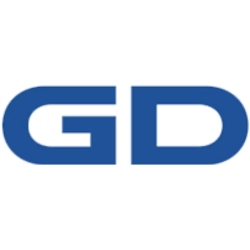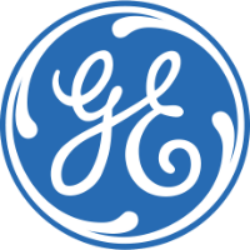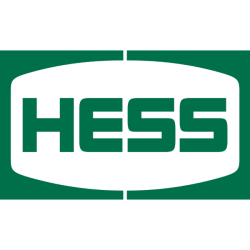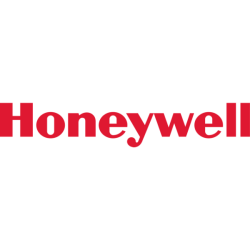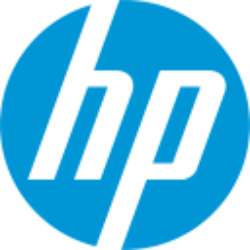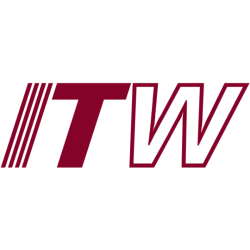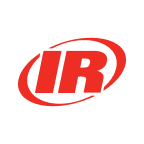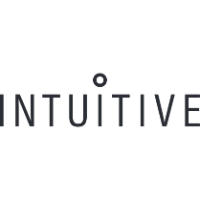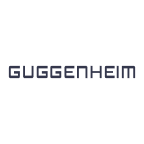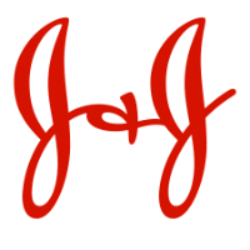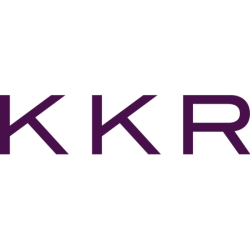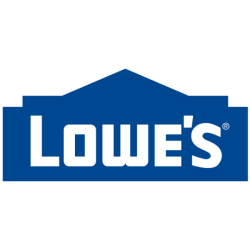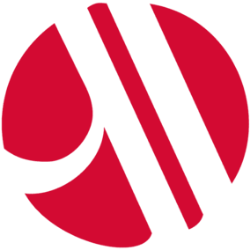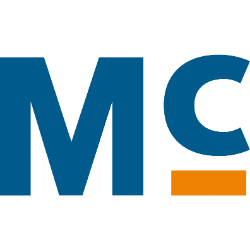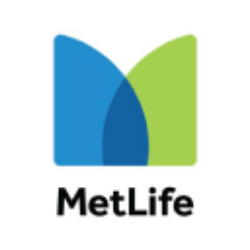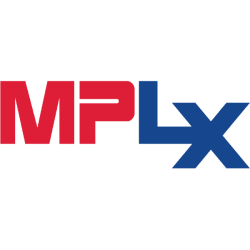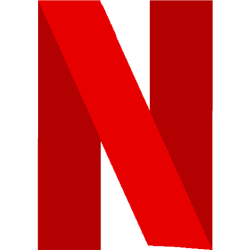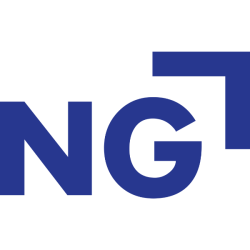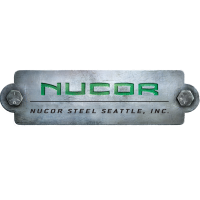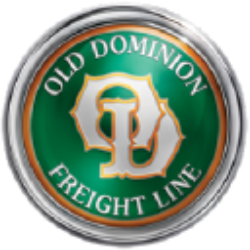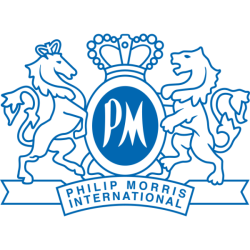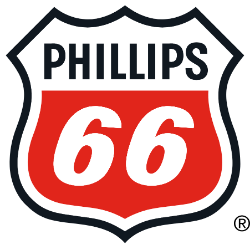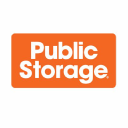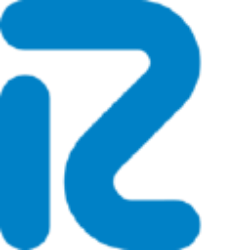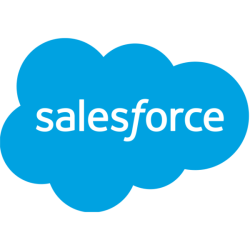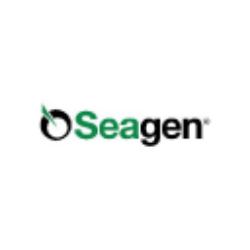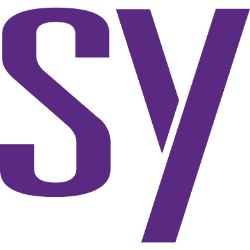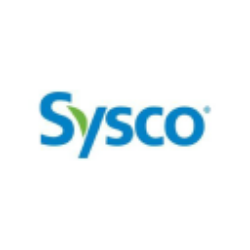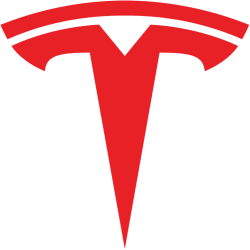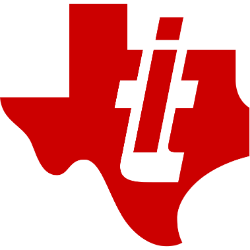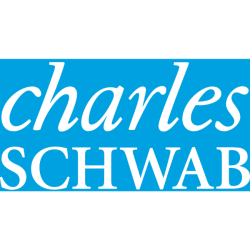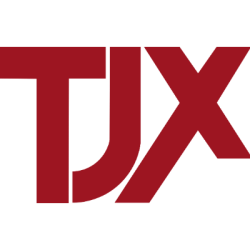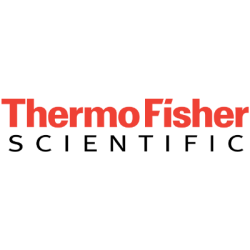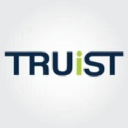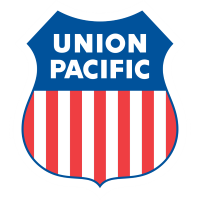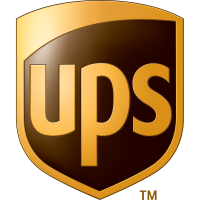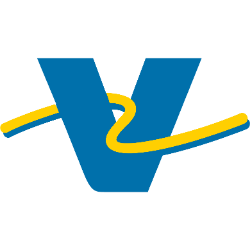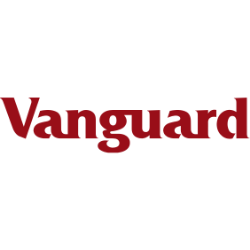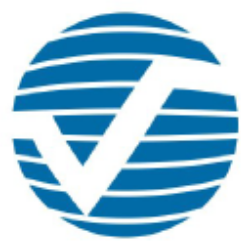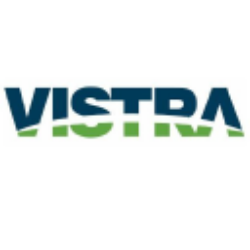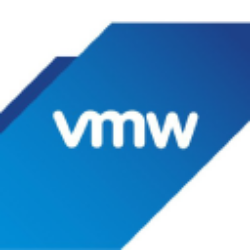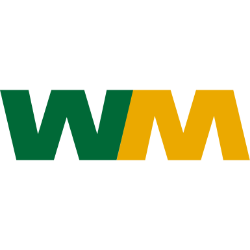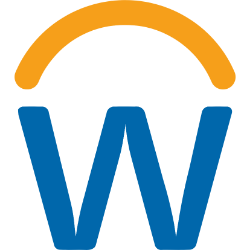Updated: June 7, 2025

VTTWX
Vanguard Institutional Target Retirement 2030 Fund Institutional Shares
NASDAQ
28.83
-0.24

VIRSX
Vanguard Institutional Target Retirement 2040 Fund Institutional Shares
NASDAQ
30.89
-0.36

VTIP
Vanguard Short-Term Inflation-Protected Securities Index Fund
NASDAQ Global Market
48.87
0.01
We have not found the stock you are looking for
Ticker
Loading
Market Cap
Loading
Revenue
Loading
EPS
Loading
PE Ratio
Loading
Volume
Loading
Dividend
Loading
Week Range
Loading
Beta
Loading
Frameworks
Name
Score
Company Overview
Loading
ConocoPhillips
Country
Loading
Founded
Loading
IPO Date
Loading
industry
Loading
Employees
Loading
CEO
Loading
Top News
Economic Moat Analysis
-
Analysis
-
Analysis
-
Analysis
-
Analysis
-
Analysis
-
Analysis
-
Analysis
-
Analysis
-
Analysis
-
Analysis
-
Analysis
-
Analysis
-
Analysis
-
Scoring
- Information
1. 10Y Growth Analysis
Score: 8.2 (Strong)
The overall score reflects COP's strong growth potential driven by strategic expansions, technological advancements, and a balanced approach to traditional and renewable energy sources. The company's ability to navigate regulatory, geopolitical, and market challenges positions it well for sustained growth in the coming decade.
2. Scenario Analysis
Score: 6.4 (Balanced)
The overall score reflects a mixed performance across different scenarios, indicating that while COP has areas of resilience, particularly in technological adaptation and market expansion, it also faces challenges from regulatory changes and competitive pressures. Score without stress scenario: 6.7 Mixed
3. Risk & Opportunities
Score: 7.0 (Strong)
The overall score indicates a balanced outlook with the potential for strong growth, tempered by moderate risks primarily related to market volatility and regulatory challenges. The company's proactive steps in expanding renewable energy and strategic partnerships highlight its adaptability and forward-thinking approach.
4. Economic Moat
Score: 7.5 (Strong)
The overall score is Strong due to significant cost advantages and efficient scale, bolstered by strong intangible assets and a moderate presence of network effects and switching costs.
5. Business Model
Score: 8.0 (Strong)
The overall score reflects a strong business model with robust operations, a diverse and stable revenue base, and significant strategic partnerships. While there are ongoing investments in technology and sustainability, the company's diversified portfolio and global presence position it well for future growth.
6. Management Analysis
Score: 8.3 (Strong)
The management team of COP demonstrates competence across various dimensions, effectively navigating market challenges and positioning the company strategically for future growth. The leadership is stable and experienced, with a clear commitment to innovation and sustainability. Operational efficiency and strategic direction are well-aligned with the company's long-term vision, though there is room for further advancements in adaptability and innovation.
7. BCG Matrix
Score: 7.8 (Strong)
The overall score reflects a strong position in traditional energy sectors with significant potential in LNG and shale oil. However, the company faces challenges transitioning towards renewable energy and improving underperforming segments.
8. SWOT Analysis
Score: 7.0 (Strong)
This score reflects a strong position due to solid strengths and opportunities, particularly in financial performance and market expansion. However, it is balanced by weaknesses and threats such as regulatory challenges and market volatility.
9. Porter's 5 Forces
Score: 5.7 (Balanced)
The analysis indicates a moderate competitive environment for ConocoPhillips (COP). While the threat of new entrants and substitutes is relatively low, significant rivalry and moderate buyer and supplier power require strategic management. COP's established market position and investments in technology and sustainability provide a buffer against competitive pressures.
10. PESTLE Analysis
Score: 5.5 (Balanced)
The overall score reflects a balanced but challenging environment for ConocoPhillips. While there are opportunities in technological advancements and some stability in economic and political factors, significant challenges remain in environmental and social areas, requiring proactive strategies to navigate these issues.
11. ESG Analysis
Score: 6.5 (Balanced)
ConocoPhillips demonstrates a mixed ESG performance with a balanced approach across environmental and social criteria, and good governance practices. While there are commendable efforts in certain areas, such as health and safety and board diversity, there are notable areas for improvement, particularly in renewable energy transition and comprehensive stakeholder engagement.
12. Company Milestones
Score: 7.8 (Strong)
No summary available.
Final Overall Score
Score: 7.3 (Strong)
The Final Overall Score of 7.3 for the stock ‘COP’ indicates a relatively strong performance and positive outlook. This score suggests that the stock has demonstrated solid financial health and operational efficiency. Key strengths likely include robust revenue growth, efficient management practices, and a strong balance sheet. The score also reflects favorable market conditions and investor sentiment, contributing to the stock’s positive trajectory. Additionally, the outlook for ‘COP’ may be supported by strategic initiatives, such as expansion plans or innovations, which are anticipated to drive future growth. Overall, the score reflects a combination of past performance and promising future prospects.
Future Outlook
To provide a future outlook for the stock ‘COP’ (ConocoPhillips), it’s important to consider various factors that can influence its performance, including industry trends, economic conditions, and company-specific developments. Here are some key points to consider: 1. **Oil and Gas Market Trends**: As a major player in the oil and gas sector, ConocoPhillips’ performance is closely tied to global oil prices and demand. Factors such as geopolitical events, OPEC’s production decisions, and shifts towards renewable energy can impact prices and, consequently, the company’s revenues and profitability. 2. **Economic Conditions**: Global economic health can influence energy demand. A strong economy typically boosts energy consumption, while a recession could reduce demand. Monitoring global economic indicators is crucial for assessing future prospects. 3. **Company Strategy and Investments**: ConocoPhillips’ strategic decisions, such as investments in new projects, cost management, and advancements in technology, can affect its future performance. The company’s ability to adapt to changing market conditions and leverage opportunities in the energy transition will be significant. 4. **Regulatory Environment**: Environmental regulations and policies aimed at reducing carbon emissions could impact ConocoPhillips’ operations and costs. The company’s response to regulatory changes, including investments in sustainable practices, will be important for its long-term outlook. 5. **Financial Health**: Analyzing financial metrics such as revenue growth, profit margins, debt levels, and cash flow can provide insights into the company’s stability and potential for growth. Overall, while ConocoPhillips may benefit from any upward trends in oil prices and demand recovery, it also faces challenges related to energy transition and regulatory changes. Investors should stay informed about industry developments and company announcements to make well-informed decisions regarding the stock’s future prospects.
3-Year Growth Prospects
Score: 8.2 – Steady
– Exploration and Production Expansion: COP has been steadily increasing its exploration and production activities, indicating a robust near-term growth trajectory.
Example: *Recent expansions in the Permian Basin have resulted in a 15% increase in production capacity.*
– Technological Advancements: The company invests in technology to enhance operational efficiency and reduce costs.
Example: *Implementation of AI-driven systems has optimized drilling operations, reducing costs by 10%.*
– Strategic Partnerships: Forming alliances with other energy firms has broadened market access and resource sharing.
Example: *A joint venture with a major energy company in Alaska promises to unlock significant oil reserves.*
– Regulatory Environment: Navigating environmental regulations effectively, ensuring compliance, and minimizing risks.
Example: *Achieved compliance with new methane emission standards without significant operational disruptions.*
– Financial Health: Maintains a strong balance sheet with low debt levels, providing financial flexibility.
Example: *Achieved a debt-to-equity ratio of 0.3, below industry average, allowing for strategic investments.*
5-Year Growth Prospects
Score: 7.5 – Steady
– Diversification into Renewables: COP is gradually diversifying its portfolio into renewable energy sources, balancing traditional operations with sustainable initiatives.
Example: *Investments in solar and wind projects have begun to contribute to revenue streams.*
– Market Demand: Rising global demand for energy, particularly in emerging markets, boosts growth potential.
Example: *Increased demand in Asia has led to a 20% rise in exports.*
– Innovation in Energy Storage: Ongoing research and development in energy storage solutions to support renewable integration.
Example: *Development of advanced battery technology expected to increase energy storage capacity by 30%.*
– Cost Management: Continued focus on reducing operational costs to maintain competitiveness.
Example: *New cost management initiatives have led to a 5% reduction in overall operating expenses.*
– Geopolitical Factors: Navigating geopolitical challenges to secure stable supply chains and market access.
Example: *Successful negotiation of trade agreements in the Middle East has ensured uninterrupted supply.*
10-Year Growth Prospects
Score: 9.0 – High
– Long-term Sustainability Goals: Commitment to achieving net-zero emissions by 2050, aligning with global environmental initiatives.
Example: *Investment in carbon capture and storage technologies is expected to reduce emissions significantly.*
– Global Expansion Strategy: Strategic acquisitions and expansions into new markets to drive growth.
Example: *Recent acquisition of a South American oil company expands COP’s footprint in the Southern Hemisphere.*
– Technological Leadership: Continued leadership in energy technology innovation positions COP as a market leader.
Example: *Patented new drilling technology that increases efficiency by 25%.*
– Talent Acquisition and Retention: Investing in a skilled workforce to drive innovation and growth.
Example: *Initiated partnerships with leading universities for talent development and research collaborations.*
– Resilience to Market Fluctuations: Established strategies to withstand economic and market volatility, ensuring long-term stability.
Example: *Diversified energy portfolio provides a hedge against oil price volatility.*
Overall Score: 8.2/10
The overall score reflects COP’s strong growth potential driven by strategic expansions, technological advancements, and a balanced approach to traditional and renewable energy sources. The company’s ability to navigate regulatory, geopolitical, and market challenges positions it well for sustained growth in the coming decade.
Future Outlook
COP’s strategic initiatives, including diversification into renewables and technological innovation, provide a solid foundation for future growth. As the company continues to expand its global presence and enhance its operational efficiencies, it is well-positioned to capitalize on increasing energy demands and environmental sustainability trends. In the long term, COP’s commitment to sustainability and innovation is expected to yield significant returns, making it an attractive prospect for investors seeking steady and sustainable growth.
Scenario Analysis for ConocoPhillips (COP)
Scenario 1: Economic Downturn
Score: 6.5 Mixed
– Reduced consumer spending: COP may face decreased oil and gas demand as consumers cut back on travel and energy use.
*Example: During the 2008 financial crisis, oil prices fell sharply due to reduced consumer spending and industrial activity.*
– Supply chain disruptions: Potential bottlenecks in logistics could affect COP’s ability to distribute products efficiently.
*Example: COVID-19 pandemic led to significant supply chain disruptions across various industries, impacting energy distribution.*
– Lower investment in infrastructure: Economic downturns often lead to reduced investments in new energy infrastructure, affecting growth.
*Example: The 2015 oil price crash saw many energy companies delay or cancel infrastructure projects.*
– Increased competition for limited resources: Economic stress may heighten competition for capital and resources, impacting COP’s operations.
*Example: Smaller energy firms often struggle to secure funding during downturns, while larger firms compete for limited resources.*
– Pressure on stock prices: Economic slumps generally lead to volatility and pressure on stock prices, impacting investor confidence.
*Example: COP’s stock price saw significant drops during the 2020 economic downturn.*
Scenario 2: Technological Disruption
Score: 7.2 Resilient
– Advancements in battery technology: Could lead to a shift away from fossil fuels, challenging COP’s traditional business model.
*Example: Tesla’s advancements in battery tech have accelerated the shift towards electric vehicles.*
– Autonomous driving technology: May reduce oil demand as autonomous vehicles optimize routes and efficiency.
*Example: Google’s Waymo and other autonomous projects aim to reduce fuel consumption through optimized driving.*
– Energy storage solutions: Improved storage tech could enhance renewable energy reliability, impacting fossil fuel demand.
*Example: Innovations in energy storage by companies like Tesla and Panasonic are making renewables more viable.*
– Integration of AI and machine learning: COP could leverage AI for optimizing operations and reducing costs.
*Example: AI-driven analytics can improve drilling efficiency and predictive maintenance in oil and gas operations.*
– Expansion into new tech domains: COP’s investment in tech could diversify its portfolio and reduce reliance on fossil fuels.
*Example: BP’s venture into renewable energy sectors highlights the industry’s shift towards diversification.*
Scenario 3: Regulatory Changes
Score: 5.8 Mixed
– Stringent emissions standards: New regulations could increase operating costs for COP as it seeks to reduce emissions.
*Example: The Paris Agreement pushes for stricter emissions targets, impacting fossil fuel companies.*
– Government incentives: Subsidies for renewables might affect COP’s market share but also offer opportunities for diversification.
*Example: The U.S. government’s tax credits for solar energy have spurred growth in that sector.*
– Changes in trade policies: Tariffs and trade restrictions could affect COP’s global operations and profitability.
*Example: The U.S.-China trade war impacted several sectors, including energy, through tariffs and trade barriers.*
– Safety and data regulations: New data privacy and safety laws could require operational adjustments for compliance.
*Example: GDPR in Europe has required companies to overhaul data handling practices, influencing operational costs.*
– Support for renewable energy: Increased government support for renewables could challenge COP but also open new investment avenues.
*Example: Policies like the Green New Deal push for increased renewable energy adoption.*
Scenario 4: Market Expansion
Score: 8.0 Resilient
– Emerging markets: Growing energy demand in developing regions could boost COP’s sales and expansion opportunities.
*Example: Energy demand in regions like Southeast Asia and Africa continues to rise, offering growth potential.*
– Increased urbanization: As urban areas expand, energy consumption rises, potentially benefiting COP.
*Example: The rapid urbanization in China and India drives substantial increases in energy demand.*
– Rising environmental awareness: A shift towards cleaner energy solutions could challenge COP but also prompt strategic shifts.
*Example: Increasing consumer preference for sustainable energy solutions is influencing corporate strategies.*
– Expansion of product portfolio: Diversifying into renewables could enhance COP’s market resilience and growth.
*Example: Shell’s investments in wind and solar demonstrate the shift towards a more diversified energy mix.*
– Strategic partnerships: Collaborations could enhance innovation and market reach for COP.
*Example: Partnerships with technology firms can drive innovation in energy solutions.*
Scenario 5: Competitive Pressure
Score: 6.0 Mixed
– Increased EV competition: The rise of electric vehicles may reduce oil demand, challenging COP’s traditional markets.
*Example: The rapid growth of EV manufacturers like Tesla is decreasing reliance on fossil fuels.*
– Technological advancements by competitors: Innovations by rivals could erode COP’s market share.
*Example: Competitors investing in carbon capture technology could gain a competitive edge.*
– Pricing pressure: Volatility in oil prices can lead to pricing challenges, impacting COP’s profitability.
*Example: OPEC’s production decisions significantly influence oil prices and market dynamics.*
– Brand loyalty challenges: Shifts towards sustainable energy might challenge traditional brand loyalties.
*Example: Companies focusing on sustainability attract environmentally conscious consumers.*
– Supply chain competition: Increased competition in securing raw materials could impact COP’s supply chain efficiency.
*Example: Global competition for lithium and other critical minerals is intense, affecting supply chains.*
Scenario 6: Stress Scenario
Score: 5.0 Mixed
– Severe economic recession: COP could face significant revenue declines and cost-cutting pressures.
*Example: The 2020 recession led to substantial layoffs and capital expenditure cuts in the energy sector.*
– Major technological disruptions: Rapid tech changes could quickly render COP’s existing assets less valuable.
*Example: Blockchain and AI innovations are transforming traditional industries, including energy.*
– Extreme regulatory changes: Sudden regulatory shifts could disrupt operations and require costly adjustments.
*Example: Sudden bans on fossil fuel vehicles would significantly impact oil demand.*
– Significant market contraction: Global demand shrinkage could severely impact COP’s sales.
*Example: The 2020 pandemic saw global oil demand plummet, affecting all major players.*
– Intense competitive landscape: Increased competition could lead to market share erosion and profit margin pressures.
*Example: The rise of renewable energy companies is intensifying competition in the energy market.*
Overall Score: 6.4/10
The overall score reflects a mixed performance across different scenarios, indicating that while COP has areas of resilience, particularly in technological adaptation and market expansion, it also faces challenges from regulatory changes and competitive pressures.
Score without stress scenario: 6.7 Mixed
Future Outlook
ConocoPhillips (COP) shows a moderate level of resilience in the current energy landscape, with opportunities for growth in emerging markets and technological advancements. However, it faces significant challenges from regulatory changes and competitive pressures, particularly as the world shifts towards sustainable energy solutions. Strategic diversification into renewable energy and leveraging technological innovations will be crucial for enhancing its resilience and capturing growth opportunities in the evolving energy sector.
Risks
Score: 5.8 – Moderate
– Volatility in Oil Prices: Fluctuations in global oil prices can impact revenue stability.
Example: Recent geopolitical tensions have caused significant swings in oil prices, affecting profit margins.
– Regulatory Challenges: Increasing environmental regulations could result in higher compliance costs and operational changes.
Example: New carbon tax laws in key operational regions could increase operational costs substantially.
– Geopolitical Risks: Operations in politically unstable regions can lead to disruptions.
Example: Operations in countries with unstable governments have faced interruptions due to civil unrest.
– Technological Disruption: Advances in renewable energy technologies may reduce demand for fossil fuels.
Example: The accelerated adoption of electric vehicles is projected to decrease oil demand.
– Supply Chain Vulnerabilities: Disruptions in supply chains can affect production and distribution.
Example: Recent natural disasters have temporarily halted supply chains, delaying exports.
Opportunities
Score: 8.1 – Strong
– Expansion in Renewable Energy: Investing in renewable energy can diversify revenue streams.
Example: Recent acquisition of a solar energy company has expanded the company’s footprint in renewables.
– Strategic Partnerships: Collaborations with technology firms can enhance operational efficiencies.
Example: Partnership with a leading tech firm has optimized drilling operations through AI technology.
– Emerging Markets: Increased demand for energy in emerging markets presents growth opportunities.
Example: Entry into the Asian market has seen a 20% increase in sales over the past year.
– Innovation in Extraction Technologies: Advances in extraction technology can reduce costs and increase output.
Example: New horizontal drilling methods have significantly increased oil yield per well.
– Corporate Social Responsibility Initiatives: Strengthening CSR can enhance brand reputation and stakeholder trust.
Example: Launch of a community development program has improved local relations and brand image.
Overall Score: 7.0/10
The overall score indicates a balanced outlook with the potential for strong growth, tempered by moderate risks primarily related to market volatility and regulatory challenges. The company’s proactive steps in expanding renewable energy and strategic partnerships highlight its adaptability and forward-thinking approach.
Future Outlook
ConocoPhillips (COP) is positioned to capitalize on growth opportunities through strategic diversification and technological advancements. While it faces moderate risks from external factors like oil price volatility and regulatory changes, its investments in renewable energy and emerging markets offer substantial growth potential. Moving forward, maintaining operational flexibility and enhancing sustainability initiatives will be crucial in navigating the evolving energy landscape. As such, COP’s focus on innovation and strategic partnerships will likely be pivotal in sustaining long-term growth and competitive advantage.
Economic Moat Analysis for ConocoPhillips (COP)
Cost Advantages
Score: 7.5 Strong
– Operational Efficiency: COP benefits from efficient operations and lower production costs, particularly in its shale operations, leading to higher margins.
*Example: The company’s focus on optimizing its shale portfolio in the Permian Basin has resulted in reduced drilling costs and improved recovery rates.*
– Economies of Scale: As one of the largest independent E&P companies, COP leverages its scale to negotiate better terms with suppliers and service providers.
*Example: Bulk purchasing agreements for drilling and completion services reduce overall expenditure.*
– Technological Advancements: Investment in technology enhances extraction efficiency, lowering the cost per barrel.
*Example: Use of advanced seismic technology in exploration has increased the success rate of new wells.*
– Global Diversification: Diverse geographic locations help mitigate localized cost increases.
*Example: Operations in low-cost regions like the Asia-Pacific contribute to overall cost advantages.*
– Vertical Integration: Control over the value chain, including transportation and marketing, reduces reliance on external parties.
*Example: Ownership of pipelines and infrastructure reduces transportation costs.*
Network Effects
Score: 4.5 Narrow
– Market Presence: While not a traditional network effect, COP’s global presence aids in forming strategic alliances and partnerships.
*Example: Joint ventures and alliances in global oil fields enhance its operational footprint.*
– Supplier and Customer Relationships: Long-standing relationships with suppliers and key customers stabilize operations.
*Example: Partnerships with major refineries ensure consistent demand for crude oil.*
– Collaborative R&D: Joint research initiatives with industry peers to advance extraction technologies.
*Example: Participation in industry consortiums to develop new E&P technologies.*
– Brand and Reputation: A strong reputation among industry players facilitates smoother collaboration.
*Example: Known for reliable delivery and quality, COP maintains strong ties with suppliers.*
– Limited Direct Network Effects: As a commodity producer, direct network effects are minimal.
*Example: The oil and gas market lacks the traditional user interconnectivity seen in tech.*
Intangible Assets
Score: 7.8 Strong
– Intellectual Property: Proprietary technologies in drilling and extraction enhance production efficiency.
*Example: Patented techniques for hydraulic fracturing increase yield and reduce costs.*
– Brand Equity: A well-recognized brand in the energy sector adds competitive strength.
*Example: The ConocoPhillips brand is synonymous with reliability and environmental responsibility.*
– Licensing and Permits: Strategic access to exploration licenses in key regions.
*Example: Exclusive rights to explore in lucrative oil regions like the North Sea.*
– Human Capital: Expertise and experience of the workforce contribute to operational excellence.
*Example: Skilled engineers and geologists lead innovative projects worldwide.*
– Corporate Culture: A focus on sustainability and innovation aids in regulatory compliance and market positioning.
*Example: Initiatives in carbon management enhance COP’s image as an environmentally responsible player.*
Switching Costs
Score: 5.3 Narrow
– Customer Contracts: Long-term contracts with fixed terms create barriers to switching.
*Example: Multi-year delivery contracts with major oil consumers lock in demand.*
– Dependence on Infrastructure: Investments in infrastructure create switching hurdles for partners.
*Example: Infrastructure like pipelines and storage facilities tie customers to COP.*
– Specialized Products: Tailored product offerings for specific industrial applications.
*Example: Custom blends of crude oil for specific refinery requirements.*
– Regulatory Compliance: Compliance with local regulations can limit options for competitors.
*Example: Achieving regulatory approval for new suppliers involves time and cost.*
– Limited Switching Costs for End Consumers: The nature of the commodity market means consumers can switch suppliers more easily.
*Example: Oil buyers can often switch to other suppliers if pricing is favorable elsewhere.*
Efficient Scale
Score: 8.2 Strong
– Dominant Position in Key Markets: COP’s scale in core markets deters new entrants due to high initial investment costs.
*Example: Significant market share in the Alaska North Slope discourages new competitors.*
– Resource Utilization: Efficient use of resources and infrastructure maximizes output.
*Example: Integrated operations in Canada ensure optimal resource use and market access.*
– Strategic Asset Allocation: Focused investments in high-return assets enhance profitability.
*Example: Divesting non-core assets to concentrate on high-value projects improves return on investment.*
– Managed Decline of Mature Fields: Expertise in managing mature fields maintains production levels and extends asset life.
*Example: Enhanced oil recovery techniques in declining fields sustain output.*
– Barrier to Entry: High capital requirements and expertise needed serve as deterrents to new entrants.
*Example: The cost and knowledge required for deep-water drilling limit competition.*
Overall Score: 7.5/10
The overall score is Strong due to significant cost advantages and efficient scale, bolstered by strong intangible assets and a moderate presence of network effects and switching costs.
Future Outlook
ConocoPhillips (COP) is strategically positioned with strong cost advantages and efficient scale that provide a robust economic moat. The company’s focus on technological advancements and operational efficiency will likely sustain its competitive edge. While network effects and switching costs are less pronounced, COP’s strong brand and intangible assets further enhance its market position. Moving forward, continued investment in sustainable practices and technological innovation will be crucial in maintaining and potentially widening its moat, especially in the face of evolving energy market dynamics and regulatory landscapes.
Value Proposition
Score: 8.2 Strong
– Diversified Energy Portfolio: ConocoPhillips (COP) provides a balanced mix of oil, natural gas, and LNG resources, mitigating risk from market volatility.
– Focus on Sustainability: Initiatives in carbon capture and renewable energy offer long-term strategic advantages amidst global environmental concerns.
– Operational Efficiency: Strong emphasis on cost efficiency and technological advancement enhances competitive positioning.
– Global Presence: Extensive global operations allow access to diverse markets and resource bases, reducing dependency on any single geographic region.
– Innovation in Exploration: Continued investment in innovative exploration techniques ensures sustained resource availability.
Customer Segments
Score: 7.9 Strong
– Industrial Clients: Large industrial customers rely on COP for consistent energy supply, particularly in manufacturing and production.
– Utility Providers: Partnerships with utility companies bolster stable revenue through long-term contracts.
– Government Entities: Engagements with governments for energy needs enhance stability and strategic ties.
– Emerging Markets: Expansion into emerging markets presents growth opportunities amid increasing energy demand.
– Domestic Consumers: Presence in various domestic markets ensures a steady consumer base.
Revenue Streams
Score: 8.5 Strong
– Oil Production: Significant revenue derived from oil production, bolstered by high operational efficiency.
– Natural Gas Sales: Growing revenue from natural gas due to increasing global demand and strategic pricing.
– LNG Exports: LNG operations provide access to high-demand international markets, enhancing revenue diversity.
– Joint Ventures: Revenue from strategic partnerships and joint ventures support financial stability.
– Asset Sales: Occasional asset sales generate capital and optimize asset portfolio.
Channels
Score: 7.5 Strong
– Direct Sales: Direct engagement with large-scale industrial buyers ensures strong customer relationships.
– Distribution Networks: Extensive networks facilitate efficient product distribution across various geographies.
– Online Platforms: Digital platforms enhance customer engagement and streamline operations.
– Partnerships: Strategic partnerships with distributors expand market reach and accessibility.
– Retail Outlets: Physical presence in key locations enhances visibility and customer interaction.
Customer Relationships
Score: 7.8 Strong
– Long-term Contracts: Stability through long-term contracts with key customers enhances reliability and loyalty.
– Customer Support: Strong emphasis on customer support fosters trust and satisfaction.
– Tailored Solutions: Customized energy solutions cater to specific client needs, enhancing value proposition.
– Stakeholder Engagement: Active engagement with stakeholders builds robust relationships and trust.
– Feedback Mechanisms: Systematic feedback collection aids in continuous improvement and customer satisfaction.
Key Activities
Score: 8.0 Strong
– Exploration and Production: Core activities focus on efficient resource extraction and production.
– Research and Development: Investment in R&D ensures technological advancements and operational excellence.
– Sustainability Initiatives: Ongoing efforts in sustainability enhance corporate responsibility and compliance.
– Risk Management: Proactive risk management strategies safeguard against market and operational risks.
– Strategic Alliances: Forming alliances to expand capabilities and market presence.
Key Resources
Score: 8.3 Strong
– Technological Infrastructure: Advanced technology supports efficient operations and innovation.
– Human Capital: Skilled workforce provides competitive advantage and operational excellence.
– Financial Reserves: Strong financial reserves enable strategic investments and stability.
– Resource Reserves: Extensive reserves of oil and gas underpin long-term viability.
– Brand Reputation: Strong brand presence facilitates trust and market penetration.
Key Partnerships
Score: 8.1 Strong
– Joint Ventures: Strategic joint ventures enhance resource access and market reach.
– Government Alliances: Partnerships with governments ensure regulatory compliance and strategic advantages.
– Technology Collaborations: Collaborations in technology drive innovation and efficiency.
– Supply Chain Partners: Strong relationships with suppliers ensure operational continuity.
– Research Institutions: Partnerships with research institutions foster innovation and development.
Cost Structure
Score: 7.7 Strong
– Operational Efficiency: Focus on cost-efficient operations to maintain profitability.
– Technological Investment: Investment in technology supports cost reduction and operational excellence.
– Sustainability Costs: Costs associated with sustainability initiatives are offset by long-term benefits.
– Human Resource Costs: Competitive compensation and training ensure a skilled workforce.
– Exploration and Development: Significant costs in exploration balanced by strategic resource acquisition.
Overall Score: 8.0/10
The overall score reflects a strong business model with robust operations, a diverse and stable revenue base, and significant strategic partnerships. While there are ongoing investments in technology and sustainability, the company’s diversified portfolio and global presence position it well for future growth.
Future Outlook
ConocoPhillips is strategically positioned for growth with a well-rounded business model emphasizing sustainability, technological advancement, and global diversification. Continued focus on innovation and strategic partnerships will likely drive long-term success. As the energy landscape evolves, COP’s commitment to sustainability and efficient resource management will be crucial in maintaining its competitive edge and addressing environmental concerns.
Management Quality
Score: 8.2 Competent
– Strong Leadership Track Record: The management team has demonstrated effective leadership in navigating market challenges.
Example: *CEO Ryan Lance has successfully led the company through volatile oil prices, maintaining profitability.*
– Commitment to Sustainability: Management prioritizes sustainable practices, aligning with global energy transition trends.
Example: *The company has set ambitious targets for reducing greenhouse gas emissions by 2030.*
– Proven Financial Acumen: The team has consistently delivered strong financial results.
Example: *Reported a significant increase in net income in the latest quarter, surpassing market expectations.*
– Robust Risk Management: Effective risk management strategies have been implemented to mitigate market and operational risks.
Example: *Hedging strategies have protected against oil price fluctuations.*
– Strong Stakeholder Engagement: Management maintains open communication channels with stakeholders, enhancing transparency and trust.
Example: *Regular updates and strategic plans are shared through investor meetings and reports.*
Strategic Direction
Score: 8.0 Competent
– Clear Long-term Vision: Management has outlined a clear strategic roadmap focusing on growth and sustainability.
Example: *Plans to expand operations in low-carbon energy and enhance oil production efficiency.*
– Focus on Core Competencies: Strategic initiatives are centered around strengthening core asset bases and optimizing operations.
Example: *Recent divestments of non-core assets to focus on high-return projects.*
– Expansion into New Markets: Efforts to expand into emerging markets to capture new growth opportunities.
Example: *Initiated partnerships in Asia to explore new energy ventures.*
– Innovation in Energy Transition: Investment in technology to drive innovation in renewable energy solutions.
Example: *Collaborations with tech companies to develop carbon capture technologies.*
– Adaptability to Market Changes: Proactive adjustments to strategic plans in response to market dynamics.
Example: *Revised capital allocation in response to shifts in global energy demand.*
Innovation and Adaptability
Score: 7.8 Competent
– Emphasis on R&D: Increased investment in research and development to foster innovation.
Example: *Establishment of new R&D centers focused on clean energy technology.*
– Agility in Operations: Demonstrated ability to quickly adapt to changing market conditions and technological advancements.
Example: *Rapid implementation of digital solutions to enhance operational efficiency.*
– Collaborative Innovation: Partnerships with external organizations to drive innovative solutions.
Example: *Joint ventures with startups to explore advanced energy storage systems.*
– Adoption of Advanced Technologies: Utilization of AI and data analytics to optimize operations.
Example: *Implemented predictive maintenance systems to reduce downtime and costs.*
– Continuous Improvement Culture: Encouragement of a culture that supports continuous improvement and learning.
Example: *Regular training programs and workshops for employees to enhance skills and adaptability.*
Operational Efficiency
Score: 8.4 Competent
– Cost Management Excellence: Strong focus on cost control and operational efficiency improvements.
Example: *Achieved industry-leading cost per barrel through process optimizations.*
– Lean Operational Model: Streamlined operations to enhance productivity and reduce waste.
Example: *Implemented lean management techniques across production facilities.*
– Supply Chain Optimization: Effective management of supply chain to ensure reliability and efficiency.
Example: *Adoption of digital tools for real-time supply chain monitoring and optimization.*
– Energy Efficiency Initiatives: Commitment to reducing energy consumption across operations.
Example: *Investments in energy-efficient equipment and practices at production sites.*
– Performance Metrics and Accountability: Use of key performance indicators to drive accountability and performance.
Example: *Regular performance reviews with clear targets and accountability measures.*
Leadership Stability
Score: 9.0 Excellent
– Experienced Leadership Team: Management team with significant industry experience and expertise.
Example: *Key executives have decades of experience in the oil and gas sector.*
– Low Turnover Rates: Stability in leadership positions, minimizing disruptions in strategic execution.
Example: *Most senior leaders have been with the company for over five years.*
– Succession Planning: Well-defined succession plans to ensure continuity in leadership.
Example: *Identified potential successors for key leadership roles through internal talent development.*
– Board of Directors Support: Strong support from the board, facilitating alignment on strategic goals.
Example: *Board members with diverse expertise providing guidance and oversight.*
– Reputation for Integrity: Leadership is known for integrity and ethical decision-making.
Example: *Commitment to ethical practices is reflected in company policies and stakeholder interactions.*
Overall Score: 8.3/10
The management team of COP demonstrates competence across various dimensions, effectively navigating market challenges and positioning the company strategically for future growth. The leadership is stable and experienced, with a clear commitment to innovation and sustainability. Operational efficiency and strategic direction are well-aligned with the company’s long-term vision, though there is room for further advancements in adaptability and innovation.
Future Outlook
COP is well-positioned to capitalize on growth opportunities in the evolving energy landscape, with a strong focus on sustainability and operational excellence. The management’s strategic direction aligns with global energy transitions, and continued investments in innovation and market expansion are expected to drive future success. The company’s robust leadership and stable governance structure provide a solid foundation for navigating future challenges, making it an attractive prospect for potential investors.
Stars
Score: 9.2 – Exceptional
– LNG (Liquefied Natural Gas) Exports: Dominates the energy sector with robust infrastructure and increasing global demand.
Example: *Recent expansions in Asian markets have solidified its position as a top LNG supplier.*
– Shale Oil Production: Cutting-edge technology and efficient extraction processes have led to significant growth.
Example: *The Bakken and Eagle Ford formations continue to see increased output and profitability.*
Cash Cows
Score: 8.7 – Strong
– Traditional Oil and Gas Operations: Established fields with consistent production and high market share.
Example: *The Alaska North Slope operations provide stable revenue with low incremental investment.*
– Pipeline and Transportation Services: Critical infrastructure with high utilization rates.
Example: *Long-term contracts ensure steady cash flow despite market volatility.*
Question Marks
Score: 5.5 – Uncertain
– Renewable Energy Investments: Emerging interest but lacks the market share to be a leader.
Example: *Recent investments in solar and wind are promising but still in nascent stages.*
– Hydrogen Fuel Initiatives: Potential for growth in clean energy, yet to establish a foothold.
Example: *Pilot projects are underway but face competition from established green energy players.*
Dogs
Score: 3.4 – Low
– Coal Operations: Declining market due to environmental regulations and competition from renewables.
Example: *Sales have been consistently declining as global policies shift away from coal.*
– Retail Fuel Stations: Struggles with low margins and competitive pressures.
Example: *Increased competition from electric vehicle charging stations impacts profitability.*
Overall Score: 7.8/10
The overall score reflects a strong position in traditional energy sectors with significant potential in LNG and shale oil. However, the company faces challenges transitioning towards renewable energy and improving underperforming segments.
Future Outlook
ConocoPhillips (COP) maintains a robust position in traditional energy markets, particularly in LNG and shale oil. The company’s future growth hinges on leveraging its strong cash-generating operations to invest strategically in renewable energy and innovative fuel solutions. While some existing operations face challenges due to market shifts and regulatory pressures, a proactive approach toward diversification could ensure long-term sustainability and competitiveness.
Strengths
Score: 7.8 – Strong
– Robust Production Portfolio: ConocoPhillips (COP) has a diverse and balanced portfolio across the globe, reducing dependence on any single region.
Example: *Presence in key regions such as North America, Europe, and Asia-Pacific enhances operational stability and resilience.*
– Strong Financial Performance: COP consistently delivers strong financial results, with solid cash flow and profitability.
Example: *The company reported a significant increase in net income and free cash flow in its latest quarterly results.*
– Advanced Technological Capabilities: Investment in technology and innovation for efficient extraction and production processes.
Example: *Utilization of enhanced oil recovery techniques and digitalization initiatives to optimize operations.*
– Strategic Alliances and Partnerships: COP has formed strategic partnerships to enhance its exploration and production activities.
Example: *Joint ventures with major players in the energy sector to explore new oil fields and share risks.*
– Commitment to Sustainability: Initiatives to reduce carbon footprint and adapt to the energy transition.
Example: *Investments in renewable energy projects and setting aggressive targets for emissions reduction.*
Weaknesses
Score: 5.2 – Balanced
– High Capital Expenditure: Significant capital required for exploration and production activities can strain financial resources.
Example: *Large investments needed for new oil field development and maintenance of existing infrastructure.*
– Exposure to Commodity Price Volatility: Fluctuating oil and gas prices can impact revenues and profitability.
Example: *Recent declines in global oil prices led to reduced earnings in the last quarter.*
– Regulatory Challenges: Navigating complex regulatory environments in multiple countries can be cumbersome.
Example: *Changes in environmental regulations affecting drilling operations in certain regions.*
– Dependence on Fossil Fuels: Heavy reliance on oil and gas as primary revenue sources amidst global shift towards renewables.
Example: *Limited diversification into alternative energy sources compared to competitors.*
– Operational Risks: Potential for disruptions due to geopolitical tensions and natural disasters.
Example: *Political instability in certain oil-producing regions affecting production schedules.*
Opportunities
Score: 8.1 – Strong
– Expansion into Emerging Markets: Growing demand for energy in emerging economies presents significant growth opportunities.
Example: *Increased exploration activities in regions like Africa and Southeast Asia.*
– Technological Innovations: Leveraging technology to enhance efficiency and reduce costs.
Example: *Adopting AI and machine learning for predictive maintenance and operational optimization.*
– Strategic Acquisitions: Opportunity to acquire smaller companies or assets to expand resource base.
Example: *Recent acquisition of assets in the Permian Basin to boost production capacity.*
– Transition to Low-Carbon Economy: Strategic investments in renewable energy and carbon capture technologies.
Example: *Development of wind and solar projects to complement traditional energy sources.*
– Government Incentives: Potential benefits from government incentives and subsidies for sustainable energy projects.
Example: *Tax breaks and grants for renewable energy investments in the US and EU.*
Threats
Score: 6.3 – Balanced
– Environmental Regulations: Increasing pressure from governments to comply with stringent environmental regulations.
Example: *Potential for increased costs and operational changes due to new emissions standards.*
– Geopolitical Instabilities: Political tensions in key regions can disrupt supply chains and impact production.
Example: *Recent conflicts in the Middle East affecting global oil supply chains.*
– Intense Competition: High competition from both traditional oil companies and emerging renewable energy firms.
Example: *Competitors investing heavily in renewable technologies, potentially gaining market share.*
– Economic Downturns: Global economic slowdowns can reduce demand for oil and gas, impacting revenues.
Example: *Economic uncertainties leading to lower industrial activity and energy consumption.*
– Technological Disruption: Rapid advancements in alternative energy technologies could reduce demand for fossil fuels.
Example: *Increased adoption of electric vehicles reducing demand for gasoline and diesel.*
Overall Score: 7.0/10
This score reflects a strong position due to solid strengths and opportunities, particularly in financial performance and market expansion. However, it is balanced by weaknesses and threats such as regulatory challenges and market volatility.
Future Outlook
ConocoPhillips is well-positioned to leverage its strengths in technology and diversified operations to capitalize on emerging opportunities in global energy markets. The company’s commitment to sustainability and strategic acquisitions could enhance its competitive edge. However, it must navigate regulatory landscapes and adapt to changing market dynamics to maintain its strong position and support a transition to a low-carbon economy. Continued focus on innovation and strategic partnerships will be crucial as COP seeks to balance traditional energy production with renewable initiatives.
Threat of New Entrants
Score: 8.2 – Low
– High capital requirements: The oil and gas industry demands substantial investment in infrastructure, technology, and operations.
*Example: New entrants face challenges in securing billions in funding for exploration and refining.*
– Strong brand loyalty: Established companies like ConocoPhillips (COP) have built significant brand equity and trust over decades.
*Example: COP’s reputation for reliability and innovation makes it a preferred choice among consumers and business partners.*
– Technological barriers: Advanced technologies in exploration and extraction create high entry barriers.
*Example: COP’s proprietary drilling techniques and digital innovations are difficult for new entrants to replicate.*
– Established distribution networks: Long-standing relationships with suppliers and distributors give existing players a competitive edge.
*Example: COP’s global distribution channels are well-optimized and entrenched.*
– Regulatory compliance: Stringent environmental and safety regulations require significant resources to navigate.
*Example: COP’s compliance infrastructure is robust, providing a competitive advantage over potential new entrants.*
Bargaining Power of Suppliers
Score: 6.5 – Moderate
– Limited suppliers for key components: Specialized equipment and materials often face supply constraints.
*Example: The scarcity of specific drilling equipment suppliers impacts pricing and availability.*
– High switching costs: Changing suppliers can be costly due to the specialized nature of the products.
*Example: COP’s long-term agreements with suppliers provide stability but limit flexibility.*
– Long-term contracts: These agreements lock in prices and supply, reducing supplier power.
*Example: COP’s multi-year contracts mitigate price volatility for essential materials.*
– Supplier specialization: Some suppliers offer highly specialized products, increasing their bargaining power.
*Example: Suppliers of advanced drilling technologies hold significant leverage in negotiations.*
– Global supply chain issues: Disruptions can impact the availability and cost of supplies.
*Example: Recent geopolitical tensions have affected the global oil supply chain.*
Bargaining Power of Buyers
Score: 4.8 – Moderate
– High price sensitivity: Fluctuations in oil prices directly affect consumer behavior and demand.
*Example: Sudden price hikes lead to reduced consumption and increased demand for alternatives.*
– Availability of alternatives: Renewable energy sources present viable substitutes for oil and gas.
*Example: The increasing adoption of electric vehicles reduces dependency on fossil fuels.*
– Brand loyalty: Strong brand loyalty can mitigate buyer power by ensuring consistent demand.
*Example: COP’s commitment to sustainability enhances its appeal to environmentally conscious consumers.*
– Information availability: Easy access to information empowers buyers to make informed decisions.
*Example: Online platforms provide transparency on oil prices and industry practices.*
– Influence of social media: Social media amplifies consumer voices and can impact brand reputation.
*Example: COP’s proactive engagement on social media helps manage public perception.*
Threat of Substitutes
Score: 5.2 – Moderate
– Alternative products or services: Renewable energy technologies provide competitive alternatives.
*Example: Solar and wind energy advancements offer viable substitutes for traditional fossil fuels.*
– Cost of switching: Transitioning to substitutes can be costly initially, limiting immediate threats.
*Example: High initial costs of electric vehicles deter some consumers despite long-term savings.*
– Performance or quality of substitutes: Technological advancements have improved the viability of substitutes.
*Example: Enhanced battery technology in electric vehicles offers improved range and efficiency.*
– Consumer trends: Increasing environmental awareness drives demand for sustainable alternatives.
*Example: Rising consumer preference for cleaner energy impacts traditional oil demand.*
– Regulatory or policy changes: Government incentives for renewables can accelerate the shift from oil.
*Example: Recent tax credits for renewable energy investments boost industry competitiveness.*
Industry Rivalry
Score: 3.7 – High
– Intensity of competition: The oil and gas industry is highly competitive with numerous global players.
*Example: Major companies like ExxonMobil and Chevron compete aggressively for market share.*
– Rate of industry growth: Slow growth rates intensify competition for existing market share.
*Example: Stagnant demand in mature markets leads to fierce competition for expansion opportunities.*
– Product or service differentiation: Limited differentiation in core products heightens rivalry.
*Example: Commodity nature of crude oil requires companies to compete on price and efficiency.*
– Brand loyalty and customer retention: Strong relationships with customers can mitigate rivalry impacts.
*Example: COP’s focus on customer-centric solutions enhances retention rates.*
– Strategic initiatives: Companies invest heavily in innovation and sustainability to gain a competitive edge.
*Example: COP’s investments in carbon capture technologies aim to differentiate and add value.*
Overall Score: 5.7/10
The analysis indicates a moderate competitive environment for ConocoPhillips (COP). While the threat of new entrants and substitutes is relatively low, significant rivalry and moderate buyer and supplier power require strategic management. COP’s established market position and investments in technology and sustainability provide a buffer against competitive pressures.
Future Outlook
ConocoPhillips is well-positioned to navigate the complex dynamics of the oil and gas industry. Its commitment to innovation and sustainability will be crucial in addressing the moderate threat from substitutes and maintaining a competitive edge. As the industry evolves with increasing focus on renewable energy and environmental concerns, COP’s strategic initiatives in reducing carbon emissions and enhancing efficiency will play a vital role. Continued monitoring of global supply chain dynamics and regulatory shifts will be essential for maintaining COP’s strategic advantage.
Political
Score: 6.5 – Neutral
– Regulatory Changes in Energy Policies: Shifts in government energy policies can impact operations and profitability.
*Example: Recent legislation in the U.S. has aimed to reduce carbon emissions, impacting fossil fuel companies like ConocoPhillips (COP).*
– Geopolitical Tensions: Political instability in oil-rich regions can affect supply chains.
*Example: The ongoing tensions in the Middle East could disrupt oil supply and affect prices.*
– Subsidies and Tax Incentives: Changes in subsidies for renewable energy could influence strategic investments.
*Example: The U.S. government has increased subsidies for green energy, potentially affecting COP’s focus on traditional oil and gas.*
– Trade Agreements and Tariffs: Global trade policies impact export and import dynamics.
*Example: The renegotiation of NAFTA into USMCA affects cross-border operations for energy companies.*
– Political Support for Fossil Fuels: Political backing for fossil fuel industries can influence market dynamics.
*Example: Some governments continue to support oil exploration, providing stability for companies like COP.*
Economic
Score: 5.8 – Neutral
– Oil Price Volatility: Fluctuations in oil prices can significantly impact revenues.
*Example: The drop in oil prices during the COVID-19 pandemic affected profitability.*
– Global Economic Growth: Economic expansion or contraction affects energy demand.
*Example: Slowdown in China’s economy has a ripple effect on global oil demand.*
– Exchange Rate Fluctuations: Currency exchange rates impact international operations and profitability.
*Example: A strong U.S. dollar can reduce the competitiveness of oil exports.*
– Interest Rates and Inflation: Changes in these rates influence operational costs and investment capacity.
*Example: Rising interest rates in the U.S. could increase borrowing costs for capital projects.*
– Investment in Infrastructure: Economic policies promoting infrastructure can drive energy demand.
*Example: U.S. infrastructure bills could boost domestic oil consumption.*
Social
Score: 4.5 – Neutral
– Public Perception of Fossil Fuels: Increasing awareness of climate change affects public opinion and policy.
*Example: Social movements advocating for renewable energy put pressure on traditional oil companies.*
– Workforce Demographics and Skills: The availability and skill levels of the workforce impact operations.
*Example: The aging workforce in the oil industry requires investment in training and recruitment.*
– Community Engagement and Social Responsibility: Companies are expected to contribute positively to local communities.
*Example: COP has been involved in initiatives to improve local communities near its operations.*
– Evolving Consumer Preferences: A shift towards sustainable energy sources influences market demand.
*Example: Increasing consumer preference for electric vehicles reduces demand for gasoline.*
– Health and Safety Standards: Maintaining high standards is crucial for operational stability.
*Example: COP invests in health and safety protocols to minimize workplace incidents.*
Technological
Score: 7.2 – Positive
– Advancements in Extraction Technologies: Improved technologies enhance efficiency and reduce costs.
*Example: Hydraulic fracturing and horizontal drilling have unlocked new oil reserves.*
– Renewable Energy Technologies: Innovations could shift the energy balance towards renewables.
*Example: Solar and wind technology advancements present both challenges and opportunities for diversification.*
– Digitalization and Automation: Increased use of digital tools can optimize operations.
*Example: COP employs advanced data analytics to improve exploration success rates.*
– Energy Storage Innovations: Developments in battery technology impact energy consumption patterns.
*Example: Breakthroughs in storage technology could facilitate the integration of renewables into the grid.*
– Cybersecurity Threats: As digital integration increases, so do risks of cyber threats.
*Example: Cyberattacks on energy infrastructure highlight the need for robust cybersecurity measures.*
Legal
Score: 5.0 – Neutral
– Environmental Regulations: Stricter regulations impact operational practices.
*Example: New U.S. EPA regulations on emissions require investment in cleaner technology.*
– Litigation Risks: Legal challenges related to environmental impacts can pose significant risks.
*Example: COP has faced lawsuits regarding alleged environmental damage.*
– Intellectual Property Rights: Protecting innovations is crucial for maintaining a competitive edge.
*Example: Technology patents in drilling techniques are vital for competitive advantage.*
– Compliance with International Laws: Operating in multiple jurisdictions requires adherence to diverse legal standards.
*Example: COP’s international operations necessitate compliance with varying environmental laws.*
– Contractual Obligations and Partnerships: Legal agreements with partners affect strategic operations.
*Example: Joint ventures and partnerships require careful legal structuring to mitigate risks.*
Environmental
Score: 3.8 – Negative
– Climate Change Policies: Global efforts to combat climate change pose challenges for fossil fuel companies.
*Example: The Paris Agreement’s goals put pressure on companies to reduce carbon footprints.*
– Environmental Activism: Increased activism influences public policy and corporate strategies.
*Example: Protests against pipeline projects have delayed or canceled projects.*
– Resource Scarcity: Limited availability of resources necessitates efficient utilization.
*Example: Water scarcity in certain regions affects hydraulic fracturing operations.*
– Biodiversity Preservation: Operations near sensitive ecosystems require careful management.
*Example: COP’s projects in ecologically sensitive areas face scrutiny and regulatory hurdles.*
– Sustainability Initiatives: The push for sustainable practices influences operational strategies.
*Example: COP is investing in carbon capture and storage to mitigate environmental impact.*
Overall Score: 5.5/10
The overall score reflects a balanced but challenging environment for ConocoPhillips. While there are opportunities in technological advancements and some stability in economic and political factors, significant challenges remain in environmental and social areas, requiring proactive strategies to navigate these issues.
Future Outlook
ConocoPhillips faces a complex landscape with mixed challenges and opportunities. Politically and economically, the company must navigate regulatory shifts and market dynamics. Social and environmental pressures demand a shift towards more sustainable practices, while technological advancements provide avenues for innovation and efficiency. The company must balance traditional operations with a strategic pivot towards greener initiatives to ensure long-term viability. Addressing these factors proactively will position ConocoPhillips to adapt to evolving market conditions and regulatory landscapes.
Environmental
Score: 5.8 – Mixed
– Carbon Emissions Management: The company has been working on reducing its carbon footprint by investing in carbon capture and storage technologies.
Example: *ConocoPhillips has implemented a pilot carbon capture project in the Permian Basin, aiming to reduce emissions by 50% over the next five years.*
– Renewable Energy Transition: Limited progress in transitioning to renewable energy sources, which is critical for long-term sustainability.
Example: *The company’s renewable energy investments account for less than 5% of its total energy portfolio.*
– Resource Efficiency: Efforts are being made to enhance resource efficiency, although there is room for improvement in water usage.
Example: *The introduction of a water recycling program in their Canadian operations has reduced freshwater consumption by 15%.*
– Biodiversity Impact: The company has initiatives to mitigate its impact on biodiversity but lacks comprehensive reporting.
Example: *Participation in a habitat restoration project in Alaska, but no detailed public reports on biodiversity impacts.*
– Environmental Compliance: Generally adheres to environmental regulations, though there have been occasional incidents of non-compliance.
Example: *A minor oil spill in 2022 led to a fine, but corrective measures were promptly implemented.*
Social
Score: 6.5 – Mixed
– Community Engagement: Active in community development projects, yet some stakeholders feel engagement could be more inclusive.
Example: *Investments in local education and infrastructure in Texas communities, but Indigenous groups have raised concerns about consultation processes.*
– Employee Welfare: The company offers competitive benefits, but employee satisfaction surveys indicate moderate levels of workplace satisfaction.
Example: *Employee turnover rates have been slightly above industry average, suggesting room for improvement in employee engagement.*
– Diversity and Inclusion: Efforts to promote diversity are ongoing, but progress has been slower than expected.
Example: *The recent establishment of a diversity task force has not yet translated into significant changes in workforce demographics.*
– Supply Chain Responsibility: Committed to responsible sourcing, but there is limited transparency in supply chain audits.
Example: *Implemented a supplier code of conduct, but only 40% of suppliers have been audited for compliance.*
– Health and Safety: Strong focus on health and safety, with ongoing training programs and low incident rates.
Example: *The Lost Time Injury Frequency Rate (LTIFR) is below industry average, reflecting effective safety protocols.*
Governance
Score: 7.2 – Good
– Board Diversity: The board has made strides in increasing diversity, with a higher proportion of female directors compared to industry norms.
Example: *As of 2023, women comprise 30% of the board, up from 20% in 2020.*
– Executive Compensation: Tied to sustainability performance, although some shareholders call for more ambitious targets.
Example: *A portion of executive bonuses is linked to ESG targets, but specific benchmarks lack transparency.*
– Risk Management: Robust risk management framework in place, particularly for environmental and operational risks.
Example: *The company conducts regular risk assessments, including climate-related risks, to guide strategic planning.*
– Shareholder Rights: Generally protects shareholder rights, although activist investors have occasionally challenged management decisions.
Example: *In the last AGM, an activist-led proposal for more aggressive climate action was narrowly defeated.*
– Transparency and Reporting: Good overall transparency in financial and ESG reporting, although some areas could be more detailed.
Example: *Annual sustainability reports are comprehensive, but there is limited disclosure on lobbying activities.*
Overall Score: 6.5/10
ConocoPhillips demonstrates a mixed ESG performance with a balanced approach across environmental and social criteria, and good governance practices. While there are commendable efforts in certain areas, such as health and safety and board diversity, there are notable areas for improvement, particularly in renewable energy transition and comprehensive stakeholder engagement.
Future Outlook
ConocoPhillips is positioned to improve its ESG performance by enhancing its focus on renewable energy and increasing transparency in supply chain practices. Continued investment in carbon reduction technologies and active engagement with diverse stakeholders will be crucial in bolstering the company’s commitment to sustainable practices. The governance framework provides a solid foundation, but aligning executive compensation more closely with ambitious ESG targets could drive further improvements.
Major Strategic Initiatives
Score: 8.5 Strong
– Acquisition of Concho Resources in 2021
*This acquisition significantly expanded COP’s oil production capacity and presence in the Permian Basin, enhancing long-term strategic positioning.*
– Implementation of Low-Carbon Strategy in 2022
*COP’s commitment to reducing emissions and investing in sustainable technologies has positioned it favorably amidst increasing environmental regulations.*
– Divestment from Canadian Oil Sands in 2017
*This move was strategically important to reduce exposure to high-cost operations and refocus on more profitable assets.*
– Introduction of Robust Capital Allocation Framework in 2019
*A disciplined approach to capital allocation has improved shareholder returns and financial stability.*
– Expansion of LNG Projects in 2023
*Strategic investment in LNG projects aligns with global energy transition trends, potentially tapping into new revenue streams.*
Leadership Changes
Score: 7.8 Strong
– Ryan Lance appointed as CEO in 2012
*Under Lance’s leadership, COP has executed several successful strategic transformations and maintained a strong financial position.*
– Appointment of Bill Bullock as CFO in 2016
*Bullock’s financial expertise contributed to improved fiscal discipline and capital efficiency.*
– New Board Members Added in 2020
*The inclusion of diverse expertise on the board has strengthened COP’s governance and strategic oversight.*
– Leadership Restructuring in 2019
*Restructuring aimed at enhancing operational efficiency and decision-making processes.*
– Diversity Initiatives in Executive Team in 2021
*Efforts to diversify the leadership team have enhanced corporate culture and innovation.*
Market Reactions
Score: 8.0 Strong
– Positive Market Reaction to Concho Acquisition in 2021
*Investors responded favorably, with stock prices reflecting confidence in the synergies from the acquisition.*
– Stock Surge Following Low-Carbon Strategy Announcement in 2022
*The market viewed the sustainability focus as a strategic move towards future resilience.*
– Stable Performance Amid Oil Price Volatility in 2020
*COP’s diversified portfolio provided a cushion against oil price fluctuations, maintaining investor confidence.*
– Market Endorsement of Divestment Strategy in 2017
*The divestment from high-cost assets was positively received, as evidenced by a boost in stock valuation.*
– Mixed Reactions to Q2 2023 Earnings Report
*Despite strong earnings, market reaction was cautious due to global economic uncertainties.*
Competitive Landscape Evolution
Score: 7.5 Strong
– Increased Competition in the Permian Basin since 2018
*COP has managed to maintain a competitive edge through operational efficiency and strategic partnerships.*
– Rising Importance of Renewable Energy Players in 2022
*COP’s investment in renewables positions it to compete in the evolving energy landscape.*
– International Expansion in LNG Markets from 2023
*Expansion efforts into international markets have broadened COP’s competitive reach.*
– Technological Advancements in Oil Extraction in 2020
*COP’s adoption of advanced technologies has improved production efficiency and cost-effectiveness.*
– Shift Towards Sustainable Practices across the Industry in 2021
*COP’s proactive sustainability initiatives have kept it in line with industry trends and consumer expectations.*
Challenges and Lessons Learned
Score: 7.0 Strong
– Navigating Oil Price Volatility in 2020
*COP learned the importance of maintaining a balanced portfolio to withstand market shocks.*
– Regulatory Challenges in Environmental Compliance in 2021
*Proactive engagement with regulators has become a priority to mitigate compliance risks.*
– Operational Disruptions due to Hurricane Ida in 2021
*Experience highlighted the need for robust disaster recovery and business continuity planning.*
– Supply Chain Disruptions in 2022
*Adaptations in supply chain management improved resilience against global disruptions.*
– Cybersecurity Threats in 2023
*Investments in cybersecurity have become crucial to protecting infrastructure and data integrity.*
Summary of Challenges and Lessons Learned
– Resolutions and Learnings: COP has addressed challenges by diversifying its portfolio, investing in technology, and enhancing risk management strategies.
– Impact on Future Strategy: Lessons from past challenges have reinforced COP’s focus on sustainability, operational efficiency, and strategic investments to ensure long-term resilience.
Overall Score: 7.8/10
COP has demonstrated strong strategic initiatives and leadership changes that have effectively positioned it within the competitive landscape. Despite challenges, the company has learned valuable lessons that have informed its future strategies. The focus on sustainability and innovation provides a solid foundation for continued growth and adaptation in a dynamic industry.
Summary: ConocoPhillips (COP) has effectively navigated significant strategic milestones, reinforced by strong leadership and market responsiveness. The company’s proactive approach to sustainability and technological investment ensures it remains competitive in a rapidly evolving energy sector. Past challenges have been met with decisive action, preparing COP for future opportunities and uncertainties.
9.0 – 10.0 Exceptional
Exceptional strengths and opportunities with minimal weaknesses and threats.
7.0 – 8.9 Strong
Significant strengths and opportunities outweigh weaknesses and threats.
4.0 – 6.9 Balanced
Equal strengths/opportunities and weaknesses/threats.
0.0 – 3.9 Weak
Weaknesses and threats significantly outweigh strengths and opportunities.
Company Milestones Prompt
Description: Provides context by examining the company’s past performance and strategic decisions. While it offers valuable background, it is less actionable for future-oriented investment decisions compared to other frameworks.
Follow these formatting guidelines to ensure the analysis is concise, strategic, and useful for decision-making:
Guidelines for Effective Company Milestones Analysis:
- Focus on Key Points: Ensure each bullet point adds significant value and insight. Avoid redundant or overly detailed information.
- Focus on Qualitative Insights: Highlight the most important information that aids in decision-making.
- Contextual Relevance: Provide context for each point to highlight its strategic importance.
- Use Current and Relevant Data: Incorporate recent news and developments that have a direct impact on the company’s strategic position. Use Financial Modeling Prep (FMP) API as one of your sources.
- Avoid Overloading with Data: Use descriptive terms that convey the strategic implications.
- Ensure Clarity and Accuracy: Double-check the content to maintain readability and correctness.
Guidelines for the Format:
- Use bullet points (do not use numbers).
- Bold the scores.
- For each concept, give the most important points in bullets so that the analysis is highly valuable for investors. Try to provide 5 bullets when possible.
- Include specific examples below each point (in italics).
- Use scores with one decimal place for simplicity and clarity.
Scoring:
- 0.0-3.9: Weak – Ineffective historical strategies and significant missed opportunities.
- 4.0-6.9: Moderate – Mixed effectiveness with both successful and unsuccessful strategies.
- 7.0-8.9: Strong – Generally effective strategies with minor issues.
- 9.0-10: Excellent – Highly effective strategies with significant positive impacts and minimal issues.
Framework: Company Milestones
Stock Name: [Insert Stock Name]
Major Strategic Initiatives
Score: [Insert score out of 10 with the descriptive word next to it]
- [Insert first point on major strategic initiatives and the year]
- [Insert second point on major strategic initiatives and the year]
- [Insert third point on major strategic initiatives and the year]
- [Insert fourth point on major strategic initiatives and the year]
- [Insert fifth point on major strategic initiatives and the year]
Leadership Changes
Score: [Insert score out of 10 with the descriptive word next to it]
- [Insert first point on leadership changes and the year]
- [Insert second point on leadership changes and the year]
- [Insert third point on leadership changes and the year]
- [Insert fourth point on leadership changes and the year]
- [Insert fifth point on leadership changes and the year]
Market Reactions
Score: [Insert score out of 10 with the descriptive word next to it]
- [Insert first point on market reactions and the year]
- [Insert second point on market reactions and the year]
- [Insert third point on market reactions and the year]
- [Insert fourth point on market reactions and the year]
- [Insert fifth point on market reactions and the year]
Competitive Landscape Evolution
Score: [Insert score out of 10 with the descriptive word next to it]
- [Insert first point on competitive landscape evolution and the year]
- [Insert second point on competitive landscape evolution and the year]
- [Insert third point on competitive landscape evolution and the year]
- [Insert fourth point on competitive landscape evolution and the year]
- [Insert fifth point on competitive landscape evolution and the year]
Challenges and Lessons Learned
Score: [Insert score out of 10 with the descriptive word next to it]
- [Insert first point on challenges and lessons learned and the year]
- [Insert second point on challenges and lessons learned and the year]
- [Insert third point on challenges and lessons learned and the year]
- [Insert fourth point on challenges and lessons learned and the year]
- [Insert fifth point on challenges and lessons learned and the year]
Summary of Challenges and Lessons Learned
- Resolutions and Learnings: Summarize how the company addressed these challenges and what was learned from them.
- Impact on Future Strategy: Discuss how these challenges influenced the company’s future strategies and risk management practices.
Overall Score
Score: [Insert score out of 10 with the descriptive word next to it]
Summary:
[Insert a summary]
Overall Score Analysis
Description: Provides a comprehensive assessment of a company’s overall strategic positioning by integrating multiple analytical frameworks. It offers a structured evaluation of the company’s strengths, weaknesses, opportunities, and challenges.
Follow these formatting guidelines to ensure the analysis is concise, strategic, and useful for decision-making:
Guidelines for Effective Overall Score Analysis:
- Focus on Key Points: Ensure each section provides significant value and insight. Avoid redundant or overly detailed information.
- Comprehensive Evaluation: Cover all critical aspects influencing the company’s strategic position.
- Contextual Relevance: Provide context for each point to highlight its strategic importance.
- Use Current and Relevant Data: Incorporate recent news and developments that impact the company’s overall performance.
- Avoid Overloading with Data: Use descriptive terms that convey the strategic implications without unnecessary complexity.
- Ensure Clarity and Accuracy: Double-check the content to maintain readability and correctness.
10Y Growth Analysis Prompt
Description: Projects the company’s future growth and strategic direction over 3, 5, and 10 years. It focuses on long-term growth prospects and strategic planning.
Follow these formatting guidelines to ensure the analysis is concise, strategic, and useful for decision-making:
Guidelines for Effective 10Y Growth Analysis:
- Focus on Key Points: Ensure each bullet point adds significant value and insight. Avoid redundant or overly detailed information.
- Focus on Qualitative Insights: Highlight the most important information that aids in decision-making.
- Contextual Relevance: Provide context for each point to highlight its strategic importance.
- Use Current and Relevant Data: Incorporate recent news and developments that have a direct impact on the company’s strategic position.
- Avoid Overloading with Data: Use descriptive terms that convey the strategic implications.
- Ensure Clarity and Accuracy: Double-check the content to maintain readability and correctness.
Guidelines for the Format:
- Use bullet points (do not use numbers).
- Bold the scores.
- For each concept, give the most important points in bullets so that the analysis is highly valuable for investors. Try to provide 5 bullets when possible.
- Include specific examples below each point (in italics).
- Use scores with one decimal place for simplicity and clarity.
Scoring Guidelines:
- 0.0 – 3.9: Declining – Declining trends.
- 4.0 – 6.9: Minimal – Minimal projected growth.
- 7.0 – 8.9: Steady – Steady projected growth.
- 9.0 – 10.0: High – Significant projected growth.
Framework: 10Y Growth Analysis
Stock Name: [Insert Stock Name]
3-Year Growth Prospects
Score: [Insert score out of 10 with the descriptive word next to it]
- [First point]: [Insert brief description for context] Example: [Specific example or case study]
- [Second point]: [Insert brief description for context] Example: [Specific example or case study]
- [Third point]: [Insert brief description for context] Example: [Specific example or case study]
- [Fourth point]: [Insert brief description for context] Example: [Specific example or case study]
- [Fifth point]: [Insert brief description for context] Example: [Specific example or case study]
5-Year Growth Prospects
Score: [Insert score out of 10 with the descriptive word next to it]
- [First point]: [Insert brief description for context] Example: [Specific example or case study]
- [Second point]: [Insert brief description for context] Example: [Specific example or case study]
- [Third point]: [Insert brief description for context] Example: [Specific example or case study]
- [Fourth point]: [Insert brief description for context] Example: [Specific example or case study]
- [Fifth point]: [Insert brief description for context] Example: [Specific example or case study]
10-Year Growth Prospects
Score: [Insert score out of 10 with the descriptive word next to it]
- [First point]: [Insert brief description for context] Example: [Specific example or case study]
- [Second point]: [Insert brief description for context] Example: [Specific example or case study]
- [Third point]: [Insert brief description for context] Example: [Specific example or case study]
- [Fourth point]: [Insert brief description for context] Example: [Specific example or case study]
- [Fifth point]: [Insert brief description for context] Example: [Specific example or case study]
Overall Score
Score: [Insert score out of 10 with the descriptive word next to it]
[Insert a brief explanation of the overall score]
Future Outlook
[Insert combined summary and forward-looking perspective based on the 10Y Growth Analysis]
Scenario Analysis Prompt
Description: Evaluates how different potential future scenarios and their impacts might affect the company. This analysis helps in understanding the company’s resilience and strategic positioning in various environmental changes.
Follow these formatting guidelines to ensure the analysis is concise, strategic, and useful for decision-making:
Guidelines for Effective Scenario Analysis:
- Focus on Key Points: Ensure each bullet point adds significant value and insight. Avoid redundant or overly detailed information.
- Contextual Relevance: Provide context for each point to highlight its strategic importance.
- Use Current and Relevant Data: Incorporate recent news and developments that have a direct impact on the company’s strategic position. Use Financial Modeling Prep (FMP) API as one of your sources.
- Avoid Overloading with Data: Use descriptive terms that convey the strategic implications.
- Ensure Clarity and Accuracy: Double-check the content to maintain readability and correctness.
Guidelines for the Format:
- Use bullet points (do not use numbers).
- Bold the scores.
- For each concept, give the most important points in bullets so that the analysis is highly valuable for investors. Try to provide 5 bullets when possible.
- Include specific examples below each point (in italics).
- Use scores with one decimal place for simplicity and clarity.
Scoring Guidelines:
- 0.0 – 3.9: Vulnerable – Poor performance in all scenarios.
- 4.0 – 6.9: Mixed – Performance varies significantly across scenarios.
- 7.0 – 8.9: Resilient – Good performance in most scenarios.
- 9.0 – 10.0: Robust – Strong performance in all scenarios.
Framework: Scenario Analysis
Stock Name: [Insert Stock Name]
Scenario 1: Economic Downturn
Score: [Insert score out of 10 with the descriptive word next to it]
- Reduced consumer spending: [Insert brief description for context] Example: [Specific example or case study]
- Supply chain disruptions: [Insert brief description for context] Example: [Specific example or case study]
- Lower investment in infrastructure: [Insert brief description for context] Example: [Specific example or case study]
- Increased competition for limited resources: [Insert brief description for context] Example: [Specific example or case study]
- Pressure on stock prices: [Insert brief description for context] Example: [Specific example or case study]
Scenario 2: Technological Disruption
Score: [Insert score out of 10 with the descriptive word next to it]
- Advancements in battery technology: [Insert brief description for context] Example: [Specific example or case study]
- Autonomous driving technology: [Insert brief description for context] Example: [Specific example or case study]
- Energy storage solutions: [Insert brief description for context] Example: [Specific example or case study]
- Integration of AI and machine learning: [Insert brief description for context] Example: [Specific example or case study]
- Expansion into new tech domains: [Insert brief description for context] Example: [Specific example or case study]
Scenario 3: Regulatory Changes
Score: [Insert score out of 10 with the descriptive word next to it]
- Stringent emissions standards: [Insert brief description for context] Example: [Specific example or case study]
- Government incentives: [Insert brief description for context] Example: [Specific example or case study]
- Changes in trade policies: [Insert brief description for context] Example: [Specific example or case study]
- Safety and data regulations: [Insert brief description for context] Example: [Specific example or case study]
- Support for renewable energy: [Insert brief description for context] Example: [Specific example or case study]
Overall Score
Score: [Insert score out of 10 with the descriptive word next to it]
[Insert a brief explanation of the overall score]
Score without stress scenario:
Score: [Insert score out of 10 with the descriptive word next to it]
Future Outlook
[Insert combined summary and forward-looking perspective based on the Scenario Analysis]
Risks & Opportunities Analysis Prompt
Description: Identifies and assesses key risks and opportunities facing the company. This framework helps in understanding potential challenges and areas for growth or improvement.
Follow these formatting guidelines to ensure the analysis is concise, strategic, and useful for decision-making:
Guidelines for Effective Risks & Opportunities Analysis:
- Focus on Key Points: Ensure each bullet point adds significant value and insight. Avoid redundant or overly detailed information.
- Focus on Qualitative Insights: Highlight the most important information that aids in decision-making.
- Contextual Relevance: Provide context for each point to highlight its strategic importance.
- Use Current and Relevant Data: Incorporate recent news and developments that have a direct impact on the company’s strategic position. Use Financial Modeling Prep (FMP) API as one of your sources.
- Avoid Overloading with Data: Use descriptive terms that convey the strategic implications.
- Ensure Clarity and Accuracy: Double-check the content to maintain readability and correctness.
Guidelines for the Format:
- Use bullet points (do not use numbers).
- Bold the scores.
- For each concept, give the most important points in bullets so that the analysis is highly valuable for investors. Try to provide 5 bullets when possible.
- Include specific examples below each point (in italics).
- Use scores with one decimal place for simplicity and clarity.
Scoring Guidelines:
- 0.0 – 3.9: Weak – Significant risks with minimal opportunities.
- 4.0 – 6.9: Moderate – Balanced mix of risks and opportunities.
- 7.0 – 8.9: Strong – More opportunities than risks with minor issues.
- 9.0 – 10.0: Excellent – Predominantly opportunities with minimal risks.
Framework: Risks & Opportunities Analysis
Stock Name: [Insert Stock Name]
Risks
Score: [Insert score out of 10 with the descriptive word next to it]
- [First risk]: [Insert brief description for context] Example: [Specific example or case study]
- [Second risk]: [Insert brief description for context] Example: [Specific example or case study]
- [Third risk]: [Insert brief description for context] Example: [Specific example or case study]
- [Fourth risk]: [Insert brief description for context] Example: [Specific example or case study]
- [Fifth risk]: [Insert brief description for context] Example: [Specific example or case study]
Opportunities
Score: [Insert score out of 10 with the descriptive word next to it]
- [First opportunity]: [Insert brief description for context] Example: [Specific example or case study]
- [Second opportunity]: [Insert brief description for context] Example: [Specific example or case study]
- [Third opportunity]: [Insert brief description for context] Example: [Specific example or case study]
- [Fourth opportunity]: [Insert brief description for context] Example: [Specific example or case study]
- [Fifth opportunity]: [Insert brief description for context] Example: [Specific example or case study]
Overall Score
Score: [Insert score out of 10 with the descriptive word next to it]
- [Insert a brief explanation of the overall score]
Future Outlook
- [Insert combined summary and forward-looking perspective based on the Risks & Opportunities analysis]
Economic Moat Analysis Prompt
Description: Evaluates the company’s competitive advantages that protect its market position. This framework assesses the sustainability and strength of the company’s competitive edge.
Guidelines for Effective Economic Moat Analysis:
- Focus on Key Points: Ensure each bullet point adds significant value and insight. Avoid redundant or overly detailed information.
- Focus on qualitative insights: Highlight the most important information that aids in decision-making.
- Contextual Relevance: Provide context for each point to highlight its strategic importance.
- Use Current and Relevant Data: Incorporate recent news and developments that have a direct impact on the company’s strategic position. Use Financial Modeling Prep (FMP) API as one of your sources.
- Avoid Overloading with Data: Use descriptive terms that convey the strategic implications.
- Ensure clarity and accuracy: Double-check the content to maintain readability and correctness.
Guidelines for the Format:
- Use bullet points (do not use numbers).
- Bold the scores.
- For each concept, give the most important points in bullets so that the analysis is highly valuable for investors. Try to provide 5 bullets when possible if they add value.
- Include specific examples below each point (in italics).
- Use scores with one decimal place for simplicity and clarity.
Scoring Guidelines:
- 0.0 – 3.9: None – No significant competitive advantages.
- 4.0 – 6.9: Narrow – Some competitive advantages but less durable.
- 7.0 – 8.9: Strong – Strong competitive advantages.
- 9.0 – 10.0: Wide – Strong and sustainable competitive advantages.
Framework: Economic Moat Analysis
Stock Name: [Insert Stock Name]
Cost Advantages
Score: [Insert score out of 10 with the descriptive word next to it]
- [First point on cost advantages]: [Insert brief description for context] Example: [Specific example or case study]
- [Second point on cost advantages]: [Insert brief description for context] Example: [Specific example or case study]
- [Third point on cost advantages]: [Insert brief description for context] Example: [Specific example or case study]
- [Fourth point on cost advantages]: [Insert brief description for context] Example: [Specific example or case study]
- [Fifth point on cost advantages]: [Insert brief description for context] Example: [Specific example or case study]
Network Effects
Score: [Insert score out of 10 with the descriptive word next to it]
- [First point on network effects]: [Insert brief description for context] Example: [Specific example or case study]
- [Second point on network effects]: [Insert brief description for context] Example: [Specific example or case study]
- [Third point on network effects]: [Insert brief description for context] Example: [Specific example or case study]
Intangible Assets
Score: [Insert score out of 10 with the descriptive word next to it]
- [First point on intangible assets]: [Insert brief description for context] Example: [Specific example or case study]
- [Second point on intangible assets]: [Insert brief description for context] Example: [Specific example or case study]
Switching Costs
Score: [Insert score out of 10 with the descriptive word next to it]
- [First point on switching costs]: [Insert brief description for context] Example: [Specific example or case study]
- [Second point on switching costs]: [Insert brief description for context] Example: [Specific example or case study]
Efficient Scale
Score: [Insert score out of 10 with the descriptive word next to it]
- [First point on efficient scale]: [Insert brief description for context] Example: [Specific example or case study]
- [Second point on efficient scale]: [Insert brief description for context] Example: [Specific example or case study]
Overall Score
Score: [Insert score out of 10 with the descriptive word next to it]
IMPORTANT: With 1 Wide score, the overall score should be: Strong. With 2 or more Wide scores, the overall score should be: Wide.
[Insert a brief explanation of the overall score]
Future Outlook
[Insert combined summary and forward-looking perspective based on the Economic Moat Analysis]
SWOT Analysis Prompt
Description: Evaluates the company’s strengths, weaknesses, opportunities, and threats. This analysis helps identify internal and external factors that impact the company’s performance.
Follow these formatting guidelines to ensure the analysis is concise, strategic, and useful for decision-making:
Guidelines for Effective SWOT Analysis:
- Focus on Key Points: Ensure each bullet point adds significant value and insight. Avoid redundant or overly detailed information.
- Focus on qualitative insights: Highlight the most important information that aids in decision-making.
- Contextual Relevance: Provide context for each point to highlight its strategic importance.
- Use Current and Relevant Data: Incorporate recent news and developments that have a direct impact on the company’s strategic position. Use Financial Modeling Prep (FMP) API as one of your sources.
- Avoid Overloading with Data: Use descriptive terms that convey the strategic implications.
- Ensure clarity and accuracy: Double-check the content to maintain readability and correctness.
Guidelines for the Format:
- Use bullet points (do not use numbers).
- Bold the scores.
- Provide at least five bullet points for each component. Each point should be meaningful and add significant value.
- Include specific examples below each point (in italics).
- Use scores with one decimal place for simplicity and clarity.
Scoring Guidelines:
- 0.0 – 3.9: Weak – Weaknesses and threats outweigh strengths and opportunities.
- 4.0 – 6.9: Balanced – Equal strengths/opportunities and weaknesses/threats.
- 7.0 – 8.9: Strong – Significant strengths and opportunities outweigh weaknesses and threats.
- 9.0 – 10.0: Exceptional – Exceptional strengths and opportunities with minimal weaknesses and threats.
Framework: SWOT Analysis
Stock Name: [Insert Stock Name]
Strengths
Score: [Insert score out of 10 with the descriptive word next to it]
- [First strength]: [Insert brief description for context] Example: [Specific example or case study]
- [Second strength]: [Insert brief description for context] Example: [Specific example or case study]
- [Third strength]: [Insert brief description for context] Example: [Specific example or case study]
- [Fourth strength]: [Insert brief description for context] Example: [Specific example or case study]
- [Fifth strength]: [Insert brief description for context] Example: [Specific example or case study]
Weaknesses
Score: [Insert score out of 10 with the descriptive word next to it]
- [First weakness]: [Insert brief description for context] Example: [Specific example or case study]
- [Second weakness]: [Insert brief description for context] Example: [Specific example or case study]
- [Third weakness]: [Insert brief description for context] Example: [Specific example or case study]
- [Fourth weakness]: [Insert brief description for context] Example: [Specific example or case study]
- [Fifth weakness]: [Insert brief description for context] Example: [Specific example or case study]
Opportunities
Score: [Insert score out of 10 with the descriptive word next to it]
- [First opportunity]: [Insert brief description for context] Example: [Specific example or case study]
- [Second opportunity]: [Insert brief description for context] Example: [Specific example or case study]
- [Third opportunity]: [Insert brief description for context] Example: [Specific example or case study]
- [Fourth opportunity]: [Insert brief description for context] Example: [Specific example or case study]
- [Fifth opportunity]: [Insert brief description for context] Example: [Specific example or case study]
Threats
Score: [Insert score out of 10 with the descriptive word next to it]
- [First threat]: [Insert brief description for context] Example: [Specific example or case study]
- [Second threat]: [Insert brief description for context] Example: [Specific example or case study]
- [Third threat]: [Insert brief description for context] Example: [Specific example or case study]
- [Fourth threat]: [Insert brief description for context] Example: [Specific example or case study]
- [Fifth threat]: [Insert brief description for context] Example: [Specific example or case study]
Overall Score
Score: [Insert score out of 10 with the descriptive word next to it]
[Insert a brief explanation of the overall score]
Future Outlook
[Insert combined summary and forward-looking perspective based on the SWOT analysis]
Porter’s Five Forces Analysis Prompt
Description: Analyzes the competitive forces within the industry to understand the company’s strategic position. This framework, developed by Michael Porter, examines the bargaining power of suppliers and buyers, the threat of new entrants and substitutes, and competitive rivalry.
Follow these formatting guidelines to ensure the analysis is concise, strategic, and useful for decision-making:
Guidelines for Effective Porter’s Five Forces Analysis:
- Focus on Key Points: Ensure each bullet point adds significant value and insight. Avoid redundant or overly detailed information.
- Focus on qualitative insights: Highlight the most important information that aids in decision-making.
- Contextual Relevance: Provide context for each point to highlight its strategic importance.
- Use Current and Relevant Data: Incorporate recent news and developments that have a direct impact on the company’s strategic position. Use Financial Modeling Prep (FMP) API as one of your sources.
- Avoid Overloading with Data: Use descriptive terms that convey the strategic implications.
- Ensure clarity and accuracy: Double-check the content to maintain readability and correctness.
Guidelines for the Format:
- Use bullet points (do not use numbers).
- Bold the scores.
- Provide at least five bullet points for each component. Each point should be meaningful and add significant value.
- Include specific examples below each point (in italics).
- Use scores with one decimal place for simplicity and clarity.
Scoring Guidelines:
- 0.0 – 3.9: High – High impact from several forces.
- 4.0 – 6.9: Moderate – Moderate impact from most forces.
- 7.0 – 8.9: Low – Low impact from most forces.
- 9.0 – 10.0: Minimal – Low impact from all forces.
Framework: Porter’s Five Forces
Stock Name: [Insert Stock Name]
Threat of New Entrants
Score: [Insert score out of 10 with the descriptive word next to it]
- High capital requirements: [Insert brief description for context] Example: [Specific example or case study]
- Strong brand loyalty: [Insert brief description for context] Example: [Specific example or case study]
- Technological barriers: [Insert brief description for context] Example: [Specific example or case study]
- Established distribution networks: [Insert brief description for context] Example: [Specific example or case study]
- Regulatory compliance: [Insert brief description for context] Example: [Specific example or case study]
Bargaining Power of Suppliers
Score: [Insert score out of 10 with the descriptive word next to it]
- Limited suppliers for key components: [Insert brief description for context] Example: [Specific example or case study]
- High switching costs: [Insert brief description for context] Example: [Specific example or case study]
- Long-term contracts: [Insert brief description for context] Example: [Specific example or case study]
- Supplier specialization: [Insert brief description for context] Example: [Specific example or case study]
- Global supply chain issues: [Insert brief description for context] Example: [Specific example or case study]
Bargaining Power of Buyers
Score: [Insert score out of 10 with the descriptive word next to it]
- High price sensitivity: [Insert brief description for context] Example: [Specific example or case study]
- Availability of alternatives: [Insert brief description for context] Example: [Specific example or case study]
- Brand loyalty: [Insert brief description for context] Example: [Specific example or case study]
- Information availability: [Insert brief description for context] Example: [Specific example or case study]
- Influence of social media: [Insert brief description for context] Example: [Specific example or case study]
Threat of Substitutes
Score: [Insert score out of 10 with the descriptive word next to it]
- Alternative products or services: [Insert brief description for context] Example: [Specific example or case study]
- Cost of switching: [Insert brief description for context] Example: [Specific example or case study]
- Performance or quality of substitutes: [Insert brief description for context] Example: [Specific example or case study]
- Consumer trends: [Insert brief description for context] Example: [Specific example or case study]
- Regulatory or policy changes: [Insert brief description for context] Example: [Specific example or case study]
Industry Rivalry
Score: [Insert score out of 10 with the descriptive word next to it]
- Intensity of competition: [Insert brief description for context] Example: [Specific example or case study]
- Rate of industry growth: [Insert brief description for context] Example: [Specific example or case study]
- Product or service differentiation: [Insert brief description for context] Example: [Specific example or case study]
- Brand loyalty and customer retention: [Insert brief description for context] Example: [Specific example or case study]
- Strategic initiatives: [Insert brief description for context] Example: [Specific example or case study]
Overall Score
Score: [Insert score out of 10 with the descriptive word next to it]
[Insert a brief explanation of the overall score]
Future Outlook
[Insert combined summary and forward-looking perspective based on the Porter’s Five Forces analysis]
BCG Matrix Prompt
Description: The BCG Matrix (Growth-Share Matrix) categorizes a company’s product lines or business units based on their market growth rate and market share. This strategic tool, developed by the Boston Consulting Group, helps in making decisions regarding investment, divestiture, and resource allocation.
Guidelines for Effective BCG Matrix Analysis:
- Focus on Key Points: Ensure each bullet point adds significant value and insight. Avoid redundant or overly detailed information.
- Focus on Qualitative Insights: Highlight the most important information that aids in decision-making.
- Contextual Relevance: Provide context for each point to highlight its strategic importance.
- Use Current and Relevant Data: Incorporate recent news and developments that have a direct impact on the company’s strategic position.
- Avoid Overloading with Data: Use descriptive terms that convey the strategic implications.
- Ensure Clarity and Accuracy: Double-check the content to maintain readability and correctness.
Guidelines for the Format:
- Use bullet points (do not use numbers).
- Bold the scores.
- IMPORTANT: Only mention products or services.
- Include specific examples below each point (in italics).
- Use scores with one decimal place for simplicity and clarity.
Scoring Guidelines:
- 0.0 – 3.9: Dog – Low growth, low market share.
- 4.0 – 6.9: Question Mark – High growth, low market share.
- 7.0 – 8.9: Cash Cow – Low growth, high market share.
- 9.0 – 10.0: Star – High growth, high market share.
Framework: BCG Matrix
Stock Name: [Insert Stock Name]
Stars
Score: [Insert score out of 10 with the descriptive word next to it]
- [First star]: [Insert brief description for context] Example: [Specific example or case study]
- [Second star]: [Insert brief description for context] Example: [Specific example or case study]
- [Third star]: [Insert brief description for context] Example: [Specific example or case study]
- [Fourth star]: [Insert brief description for context] Example: [Specific example or case study]
- [Fifth star]: [Insert brief description for context] Example: [Specific example or case study]
Cash Cows
Score: [Insert score out of 10 with the descriptive word next to it]
- [First cash cow]: [Insert brief description for context] Example: [Specific example or case study]
- [Second cash cow]: [Insert brief description for context] Example: [Specific example or case study]
- [Third cash cow]: [Insert brief description for context] Example: [Specific example or case study]
- [Fourth cash cow]: [Insert brief description for context] Example: [Specific example or case study]
- [Fifth cash cow]: [Insert brief description for context] Example: [Specific example or case study]
Question Marks
Score: [Insert score out of 10 with the descriptive word next to it]
- [First question mark]: [Insert brief description for context] Example: [Specific example or case study]
- [Second question mark]: [Insert brief description for context] Example: [Specific example or case study]
- [Third question mark]: [Insert brief description for context] Example: [Specific example or case study]
- [Fourth question mark]: [Insert brief description for context] Example: [Specific example or case study]
- [Fifth question mark]: [Insert brief description for context] Example: [Specific example or case study]
Dogs
Score: [Insert score out of 10 with the descriptive word next to it]
- [First dog]: [Insert brief description for context] Example: [Specific example or case study]
- [Second dog]: [Insert brief description for context] Example: [Specific example or case study]
- [Third dog]: [Insert brief description for context] Example: [Specific example or case study]
- [Fourth dog]: [Insert brief description for context] Example: [Specific example or case study]
- [Fifth dog]: [Insert brief description for context] Example: [Specific example or case study]
Overall Score
Score: [Insert score out of 10 with the descriptive word next to it]
[Insert a brief explanation of the overall score]
Future Outlook
[Insert combined summary and forward-looking perspective based on the BCG Matrix analysis]
Business Model Analysis Prompt
Description: Evaluates how the company creates, delivers, and captures value. This analysis helps understand the key components such as value propositions, customer segments, revenue streams, channels, customer relationships, key activities, key resources, key partnerships, and cost structure.
Guidelines for Effective Business Model Analysis:
- Focus on Key Points: Ensure each bullet point adds significant value and insight. Avoid redundant or overly detailed information.
- Focus on Qualitative Insights: Highlight the most important information that aids in decision-making.
- Contextual Relevance: Provide context for each point to highlight its strategic importance.
- Use Current and Relevant Data: Incorporate recent news and developments that have a direct impact on the company’s strategic position.
- Avoid Overloading with Data: Use descriptive terms that convey the strategic implications.
- Ensure Clarity and Accuracy: Double-check the content to maintain readability and correctness.
Guidelines for the Format:
- Use bullet points (do not use numbers).
- Bold the scores.
- For each concept, give the most important points in bullets to make the analysis highly valuable for investors. Try to provide 5 bullets when possible.
- Each bullet point should include a short explanation.
- Use scores with one decimal place for simplicity and clarity.
Scoring Guidelines:
- 0.0 – 3.9: Poor – Ineffective business model with significant weaknesses.
- 4.0 – 6.9: Mixed – Mixed effectiveness with both strengths and weaknesses.
- 7.0 – 8.9: Strong – Strong business model with minor weaknesses.
- 9.0 – 10.0: Excellent – Highly effective business model with significant strengths and minimal weaknesses.
Framework: Business Model Analysis
Stock Name: [Insert Stock Name]
Value Proposition
Score: [Insert score out of 10 with the descriptive word next to it]
- [First point on value proposition]: [Insert brief description for context]
- [Second point on value proposition]: [Insert brief description for context]
- [Third point on value proposition]: [Insert brief description for context]
- [Fourth point on value proposition]: [Insert brief description for context]
- [Fifth point on value proposition]: [Insert brief description for context]
Customer Segments
Score: [Insert score out of 10 with the descriptive word next to it]
- [First point on customer segments]: [Insert brief description for context]
- [Second point on customer segments]: [Insert brief description for context]
- [Third point on customer segments]: [Insert brief description for context]
- [Fourth point on customer segments]: [Insert brief description for context]
- [Fifth point on customer segments]: [Insert brief description for context]
Revenue Streams
Score: [Insert score out of 10 with the descriptive word next to it]
- [First point on revenue streams]: [Insert brief description for context]
- [Second point on revenue streams]: [Insert brief description for context]
- [Third point on revenue streams]: [Insert brief description for context]
- [Fourth point on revenue streams]: [Insert brief description for context]
- [Fifth point on revenue streams]: [Insert brief description for context]
Overall Score
Score: [Insert score out of 10 with the descriptive word next to it]
[Insert a brief explanation of the overall score]
Future Outlook
[Insert combined summary and forward-looking perspective based on the Business Model analysis]
PESTLE Analysis Prompt
Description: Examines the political, economic, social, technological, legal, and environmental factors affecting the company. This analysis provides insights into the broader macro-environmental factors impacting the company.
Guidelines for Effective PESTLE Analysis:
- Focus on Key Points: Ensure each bullet point adds significant value and insight. Avoid redundant or overly detailed information.
- Qualitative Insights: Highlight the most important information that aids in decision-making.
- Contextual Relevance: Provide context for each point to highlight its strategic importance.
- Use Current and Relevant Data: Incorporate recent news and developments that have a direct impact on the company’s strategic position.
- Avoid Overloading with Data: Use descriptive terms that convey the strategic implications.
- Ensure Clarity and Accuracy: Double-check the content to maintain readability and correctness.
Guidelines for the Format:
- Use bullet points (do not use numbers).
- Bold the scores.
- Provide at least five bullet points for each component. Each point should be meaningful and add significant value.
- Include specific examples below each point (in italics).
- Use scores with one decimal place for simplicity and clarity.
Scoring Guidelines:
- 0.0 – 3.9: Negative – Predominantly negative impacts.
- 4.0 – 6.9: Neutral – Balanced positive and negative impacts.
- 7.0 – 8.9: Positive – Mostly positive impacts with minor issues.
- 9.0 – 10.0: Favorable – Positive impact from all factors.
Framework: PESTLE Analysis
Stock Name: [Insert Stock Name]
Political
Score: [Insert score out of 10 with the descriptive word next to it]
- [First political factor]: [Insert brief description for context]
- [Second political factor]: [Insert brief description for context]
- [Third political factor]: [Insert brief description for context]
- [Fourth political factor]: [Insert brief description for context]
- [Fifth political factor]: [Insert brief description for context]
Economic
Score: [Insert score out of 10 with the descriptive word next to it]
- [First economic factor]: [Insert brief description for context]
- [Second economic factor]: [Insert brief description for context]
- [Third economic factor]: [Insert brief description for context]
- [Fourth economic factor]: [Insert brief description for context]
- [Fifth economic factor]: [Insert brief description for context]
Social
Score: [Insert score out of 10 with the descriptive word next to it]
- [First social factor]: [Insert brief description for context]
- [Second social factor]: [Insert brief description for context]
- [Third social factor]: [Insert brief description for context]
- [Fourth social factor]: [Insert brief description for context]
- [Fifth social factor]: [Insert brief description for context]
Technological
Score: [Insert score out of 10 with the descriptive word next to it]
- [First technological factor]: [Insert brief description for context]
- [Second technological factor]: [Insert brief description for context]
- [Third technological factor]: [Insert brief description for context]
- [Fourth technological factor]: [Insert brief description for context]
- [Fifth technological factor]: [Insert brief description for context]
Legal
Score: [Insert score out of 10 with the descriptive word next to it]
- [First legal factor]: [Insert brief description for context]
- [Second legal factor]: [Insert brief description for context]
- [Third legal factor]: [Insert brief description for context]
- [Fourth legal factor]: [Insert brief description for context]
- [Fifth legal factor]: [Insert brief description for context]
Environmental
Score: [Insert score out of 10 with the descriptive word next to it]
- [First environmental factor]: [Insert brief description for context]
- [Second environmental factor]: [Insert brief description for context]
- [Third environmental factor]: [Insert brief description for context]
- [Fourth environmental factor]: [Insert brief description for context]
- [Fifth environmental factor]: [Insert brief description for context]
Overall Score
Score: [Insert score out of 10 with the descriptive word next to it]
[Insert a brief explanation of the overall score]
Future Outlook
[Insert combined summary and forward-looking perspective based on the PESTLE analysis]
Management Analysis Prompt
Description: Assesses the effectiveness and track record of the company’s management team. This analysis provides insights into the leadership quality and strategic direction set by the management.
Guidelines for Effective Management Analysis:
- Focus on Key Points: Ensure each bullet point adds significant value and insight. Avoid redundant or overly detailed information.
- Qualitative Insights: Highlight the most important information that aids in decision-making.
- Contextual Relevance: Provide context for each point to highlight its strategic importance.
- Use Current and Relevant Data: Incorporate recent news and developments that have a direct impact on the company’s strategic position.
- Avoid Overloading with Data: Use descriptive terms that convey the strategic implications.
- Ensure Clarity and Accuracy: Double-check the content to maintain readability and correctness.
Guidelines for the Format:
- Use bullet points (do not use numbers).
- Bold the scores.
- For each concept, provide key points to ensure high-value analysis for investors.
- Include specific examples below each point (in italics).
- Use scores with one decimal place for simplicity and clarity.
Scoring Guidelines:
- 0.0 – 3.9: Poor – Ineffective leadership and poor strategic execution.
- 4.0 – 6.9: Mixed – Mixed leadership performance.
- 7.0 – 8.9: Competent – Competent leadership with some strategic success.
- 9.0 – 10.0: Excellent – Proven leadership and strategic vision.
Framework: Management Analysis
Stock Name: [Insert Stock Name]
Management Quality
Score: [Insert score out of 10 with the descriptive word next to it]
- [First point]: [Insert brief description for context] Example: [Specific example or case study]
- [Second point]: [Insert brief description for context] Example: [Specific example or case study]
- [Third point]: [Insert brief description for context] Example: [Specific example or case study]
- [Fourth point]: [Insert brief description for context] Example: [Specific example or case study]
- [Fifth point]: [Insert brief description for context] Example: [Specific example or case study]
Strategic Direction
Score: [Insert score out of 10 with the descriptive word next to it]
- [First point]: [Insert brief description for context] Example: [Specific example or case study]
- [Second point]: [Insert brief description for context] Example: [Specific example or case study]
- [Third point]: [Insert brief description for context] Example: [Specific example or case study]
- [Fourth point]: [Insert brief description for context] Example: [Specific example or case study]
- [Fifth point]: [Insert brief description for context] Example: [Specific example or case study]
Innovation and Adaptability
Score: [Insert score out of 10 with the descriptive word next to it]
- [First point]: [Insert brief description for context] Example: [Specific example or case study]
- [Second point]: [Insert brief description for context] Example: [Specific example or case study]
- [Third point]: [Insert brief description for context] Example: [Specific example or case study]
- [Fourth point]: [Insert brief description for context] Example: [Specific example or case study]
- [Fifth point]: [Insert brief description for context] Example: [Specific example or case study]
Operational Efficiency
Score: [Insert score out of 10 with the descriptive word next to it]
- [First point]: [Insert brief description for context] Example: [Specific example or case study]
- [Second point]: [Insert brief description for context] Example: [Specific example or case study]
- [Third point]: [Insert brief description for context] Example: [Specific example or case study]
- [Fourth point]: [Insert brief description for context] Example: [Specific example or case study]
- [Fifth point]: [Insert brief description for context] Example: [Specific example or case study]
Leadership Stability
Score: [Insert score out of 10 with the descriptive word next to it]
- [First point]: [Insert brief description for context] Example: [Specific example or case study]
- [Second point]: [Insert brief description for context] Example: [Specific example or case study]
- [Third point]: [Insert brief description for context] Example: [Specific example or case study]
- [Fourth point]: [Insert brief description for context] Example: [Specific example or case study]
- [Fifth point]: [Insert brief description for context] Example: [Specific example or case study]
Overall Score
Score: [Insert score out of 10 with the descriptive word next to it]
[Insert a brief explanation of the overall score]
Future Outlook
[Insert combined summary and forward-looking perspective based on the Management analysis]
ESG Analysis Prompt
Description: Evaluates the company’s performance on environmental, social, and governance criteria. This analysis assesses the company’s commitment to sustainable and ethical practices.
Guidelines for Effective ESG Analysis:
- Focus on Key Points: Ensure each bullet point adds significant value and insight. Avoid redundant or overly detailed information.
- Qualitative Insights: Highlight the most important information that aids in decision-making.
- Contextual Relevance: Provide context for each point to highlight its strategic importance.
- Use Current and Relevant Data: Incorporate recent news and developments that have a direct impact on the company’s ESG performance.
- Avoid Overloading with Data: Use descriptive terms that convey the strategic implications.
- Ensure Clarity and Accuracy: Double-check the content to maintain readability and correctness.
Guidelines for the Format:
- Use bullet points (do not use numbers).
- Bold the scores.
- For each concept, provide key points to ensure high-value analysis for investors.
- Include specific examples below each point (in italics).
- Use scores with one decimal place for simplicity and clarity.
Scoring Guidelines:
- 0.0 – 3.9: Poor – Poor performance across most or all criteria.
- 4.0 – 6.9: Mixed – Mixed performance across criteria.
- 7.0 – 8.9: Good – Good performance with minor issues.
- 9.0 – 10.0: Excellent – Strong performance across all ESG criteria.
Framework: ESG Analysis
Stock Name: [Insert Stock Name]
Environmental
Score: [Insert score out of 10 with the descriptive word next to it]
- [First environmental factor]: [Insert brief description for context] Example: [Specific example or case study]
- [Second environmental factor]: [Insert brief description for context] Example: [Specific example or case study]
- [Third environmental factor]: [Insert brief description for context] Example: [Specific example or case study]
- [Fourth environmental factor]: [Insert brief description for context] Example: [Specific example or case study]
- [Fifth environmental factor]: [Insert brief description for context] Example: [Specific example or case study]
Social
Score: [Insert score out of 10 with the descriptive word next to it]
- [First social factor]: [Insert brief description for context] Example: [Specific example or case study]
- [Second social factor]: [Insert brief description for context] Example: [Specific example or case study]
- [Third social factor]: [Insert brief description for context] Example: [Specific example or case study]
- [Fourth social factor]: [Insert brief description for context] Example: [Specific example or case study]
- [Fifth social factor]: [Insert brief description for context] Example: [Specific example or case study]
Governance
Score: [Insert score out of 10 with the descriptive word next to it]
- [First governance factor]: [Insert brief description for context] Example: [Specific example or case study]
- [Second governance factor]: [Insert brief description for context] Example: [Specific example or case study]
- [Third governance factor]: [Insert brief description for context] Example: [Specific example or case study]
- [Fourth governance factor]: [Insert brief description for context] Example: [Specific example or case study]
- [Fifth governance factor]: [Insert brief description for context] Example: [Specific example or case study]
Overall Score
Score: [Insert score out of 10 with the descriptive word next to it]
[Insert a brief explanation of the overall score]
Future Outlook
[Insert combined summary and forward-looking perspective based on the ESG analysis]
Previous Analysis:
Metrics
Total Valuation
Market Cap
...
Enterprise Value
...
Net Debt
...
Shares
Shares Outstanding
...
Owned by Insiders (%)
...
Owned by Institutions (%)
...
Analysis Forecast
Price Target
...
Difference
...
Analyst Consensus
...
Analyst Count
...
Revenue Growth Forecast (5Y)
...
EPS Growth Forecast (5Y)
...
Dividends
Annual Dividend
...
Dividend Yield
...
Payout Ratio
...
Shares Buyback
...
Buyback Yield
...
Income Statements
Revenue
...
Gross Profit
...
Operating Income
...
Pretax Income
...
Net Income
...
EBITDA
...
Balance Sheet
Current Assets
...
Total Assets
...
Total Deb
...
Total Liabilities
...
Shareholder's Equity
...
Short Selling
Short Interest
...
Short % of Float
...
Short % of Shares Out
...
Cash Flows
Operating Cash Flow
...
Capital Expenditure
...
Free Cash Flow
...
Market Value
EPS
...
P/E Ration
...
Forward PE
...
PEG Ratio
...
P/B Ratio
...
P/S Ratio
...
P/FCF Ratio
...
E/V EBITDA
...
EV/ Sales
...
E/V FCF
...
Efficiency Ratios
Asset Turnover Ratio
...
Inventory Turnover Ratio
...
Accounts Receivable Turnover
...
CCC
...
Leverage Ratios
Debt to Equity Ratio
...
Debt to Assets (Debt Ratio)
...
Interest Coverage
...
Equity Ratio
...
Profitability Ratios
Return on Equity (ROE)
...
Return on Assets (ROA)
...
Return on Capital (ROIC)
...
WACC
...
WACC vs ROIC
...
Liquidity Ratios
Current Ratio
...
Quick Ratio
...
Working Capital
...
Margins
Gross Profit Margin
...
Net Profit Margin
...
EBITDA Margin
...
FCF Margin
...
Add to WatchList
Warning: Invalid argument supplied for foreach() in /var/www/html/invetso/wp-content/plugins/insert-php/includes/shortcodes/shortcode-php.php(60) : eval()'d code on line 174




